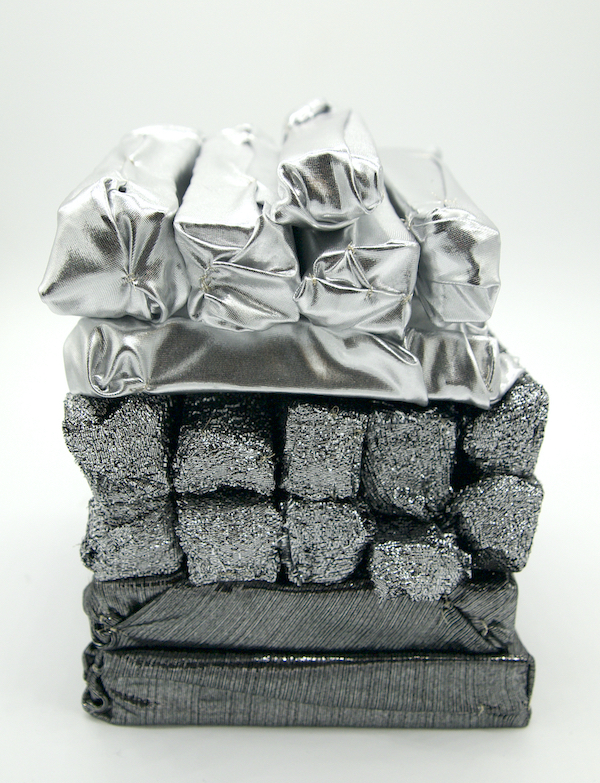Full thoughts
PhD practice-led research – full thoughts, a phrase I am currently using to describe the larger pieces of work I have developed from their initial small make origins. Below are the exhibitions that some of these full thought pieces has been part of.
____________________________________________________________________
The Leeds Artist Show 2023 | Leeds Art Gallery
14 Feb – 30 April 2023
Both Pressed for thought and Tally Continuum were selected to be part of this show.
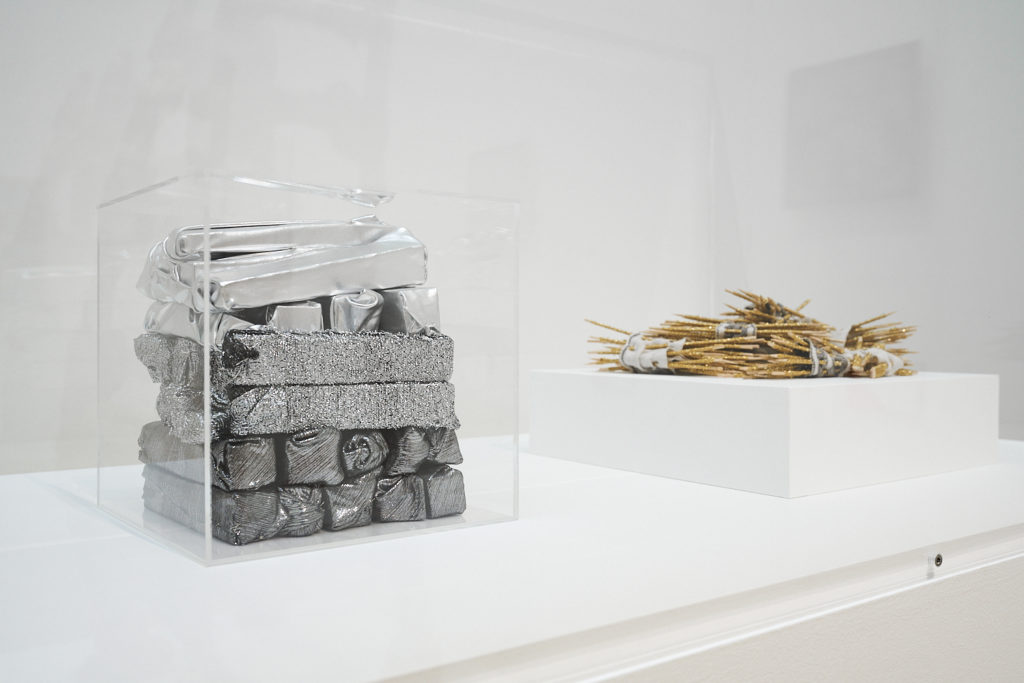
Part of the Money Talks Exhibition
Leeds City Museum – Feb – June 2022 – for more information please click here
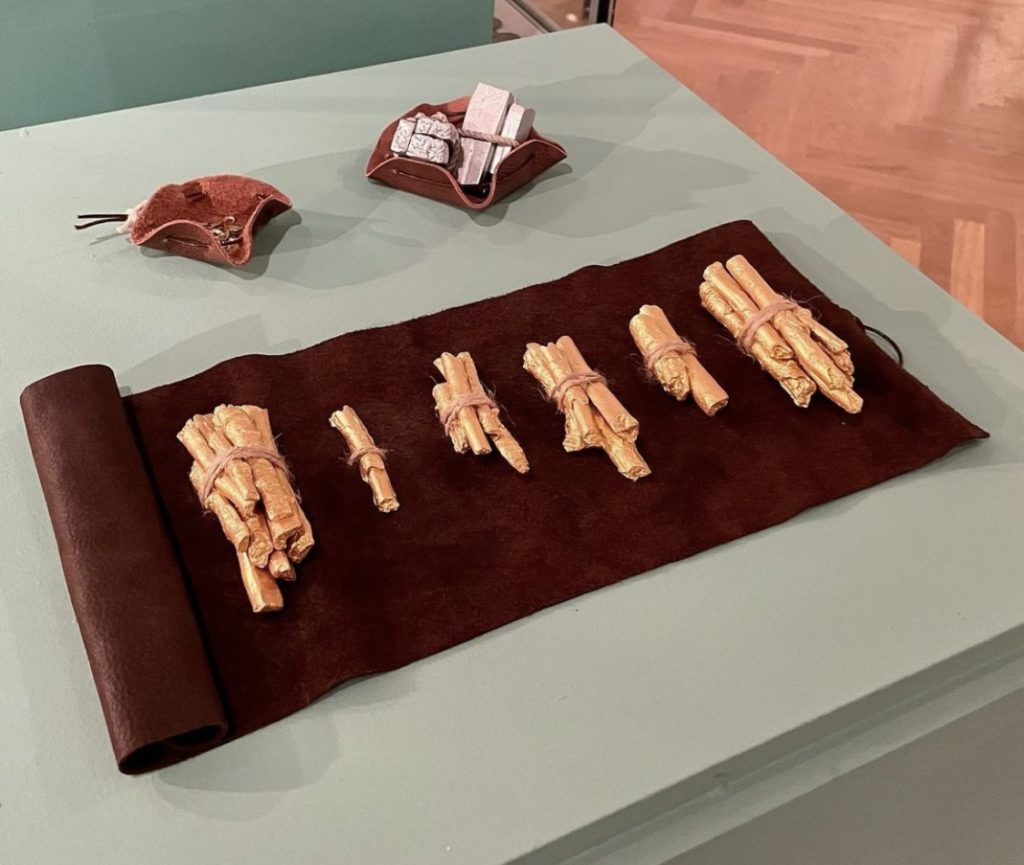
Stickpile, gold (The West Yorkshire hoard) – Full thought
“A natural state for gold to be accumulated, divided and used.
30.17g, 9.48g, 15.09g, 8.35g, 3.44g, 29.5g”
Object – Leather, string, plaster, acrylic paint
2021
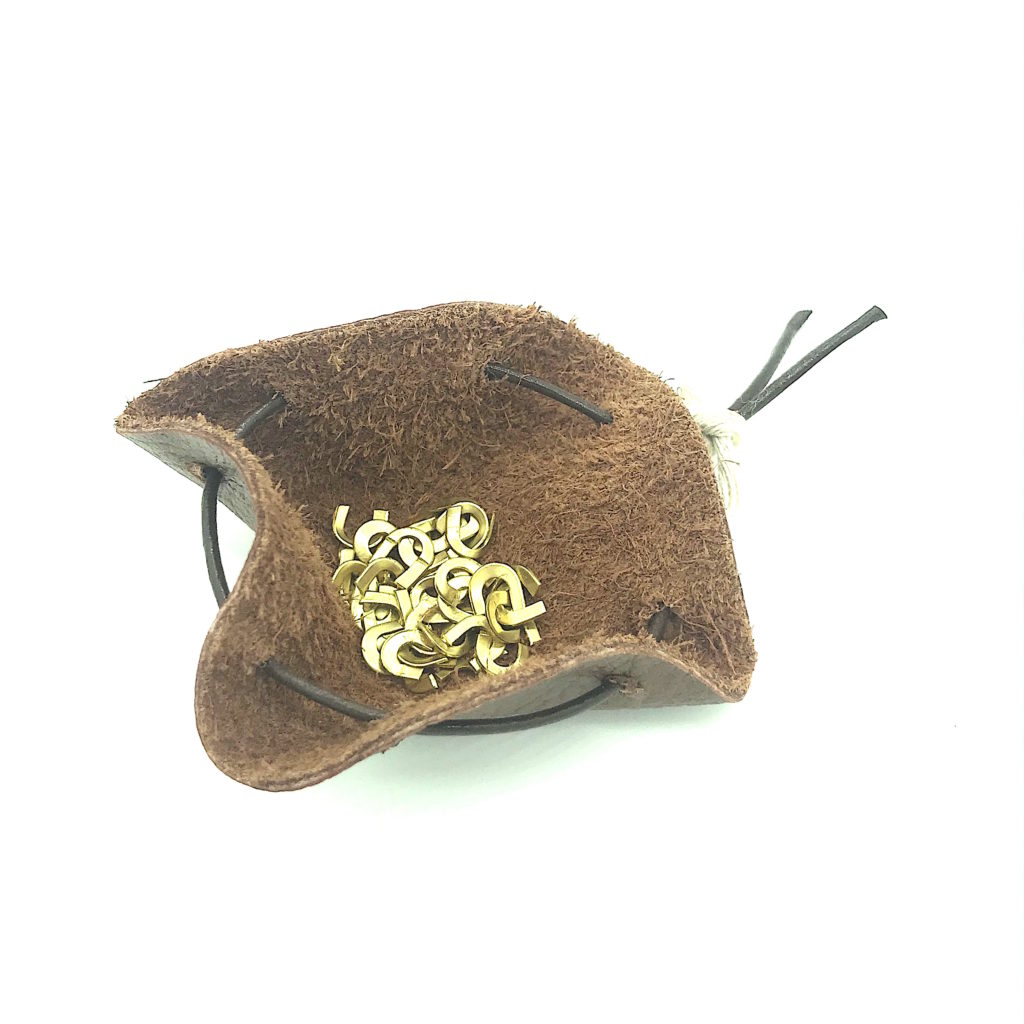
Gold – kept pieces (small makes)
‘An assemblage of ‘gold’ scrap piece – a hoard if you will of small offcuts kept because of our value and potential reuse. Our materiality marks worth to be kept, scrap – but not scrapped.’
Object – Leather, gold brass, string
2019
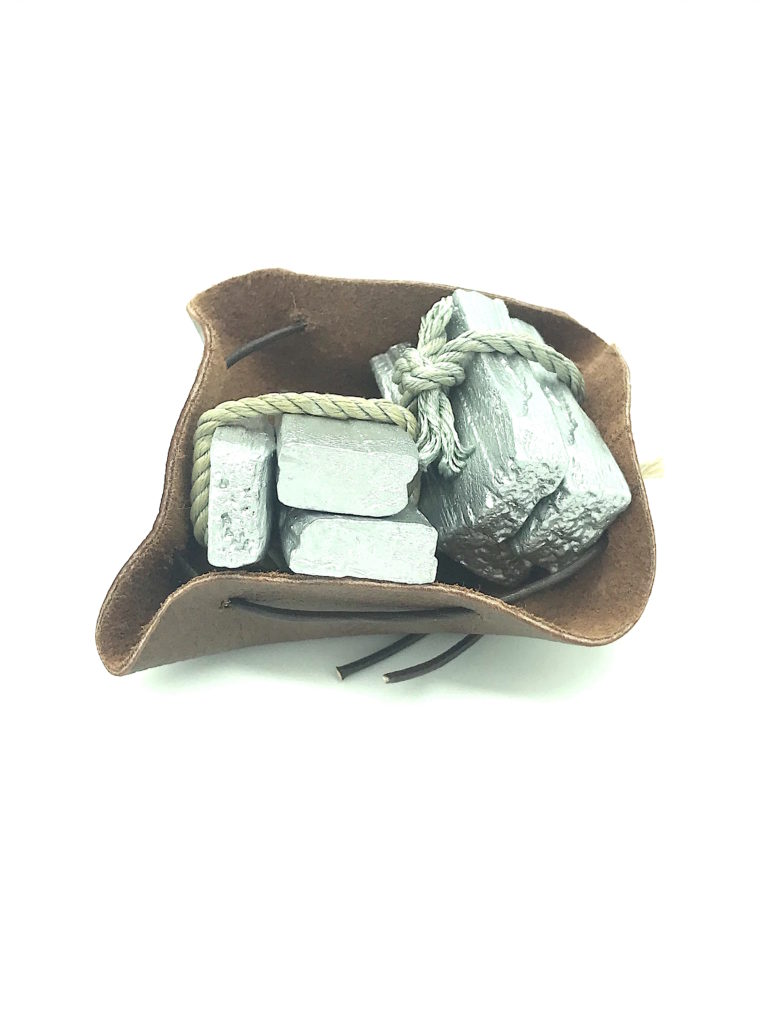
Silver – loose change (small make)
‘We are object in shape, yet work as coin, often working side by side in a pocket or purse. We will be chosen when active engagement with another person is needed, we are familiar, of an age before, a heritage that can still be seen, handled and used.’
Object – Leather, silk, silver acrylic, plaster
2019
____________________________________________________________________
Becoming silver – a before (the Bedale hoard)
Beyond Scale Gallery – Nov-Dec 2020
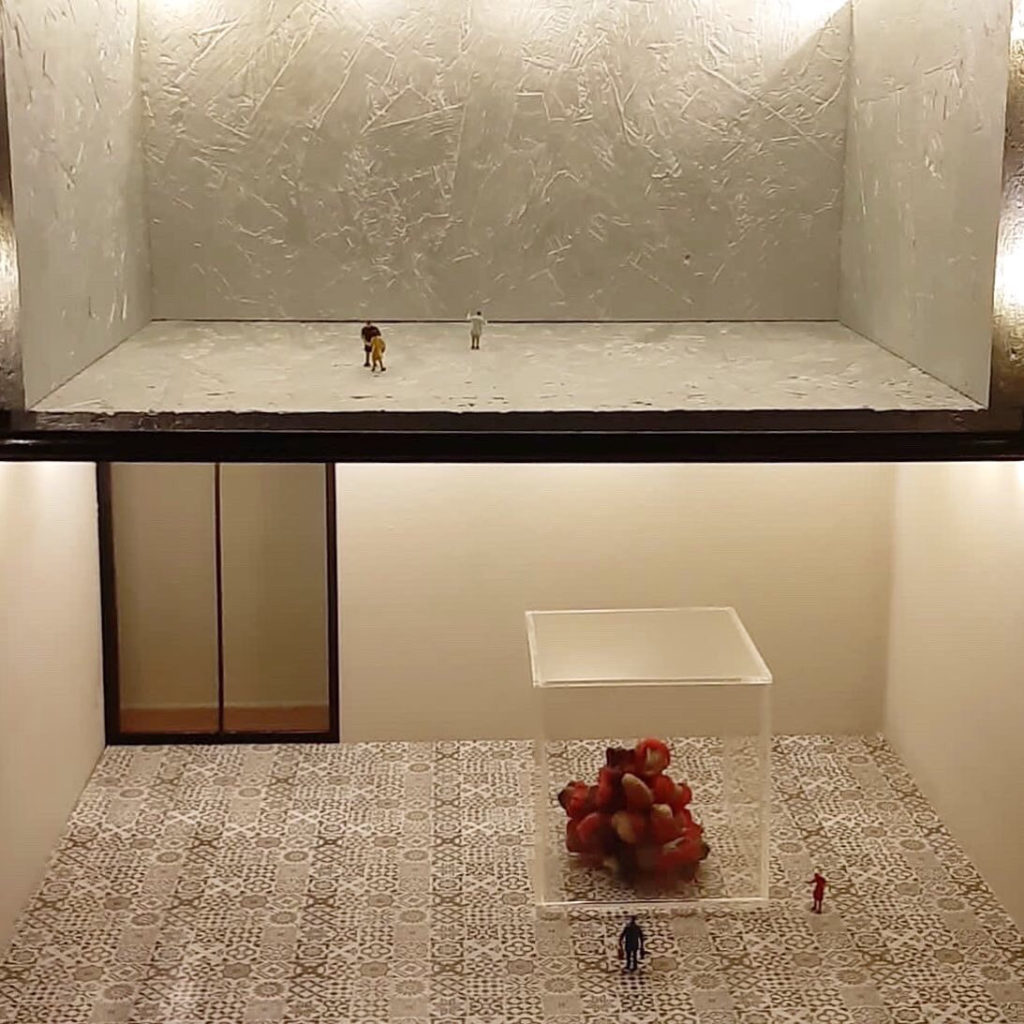
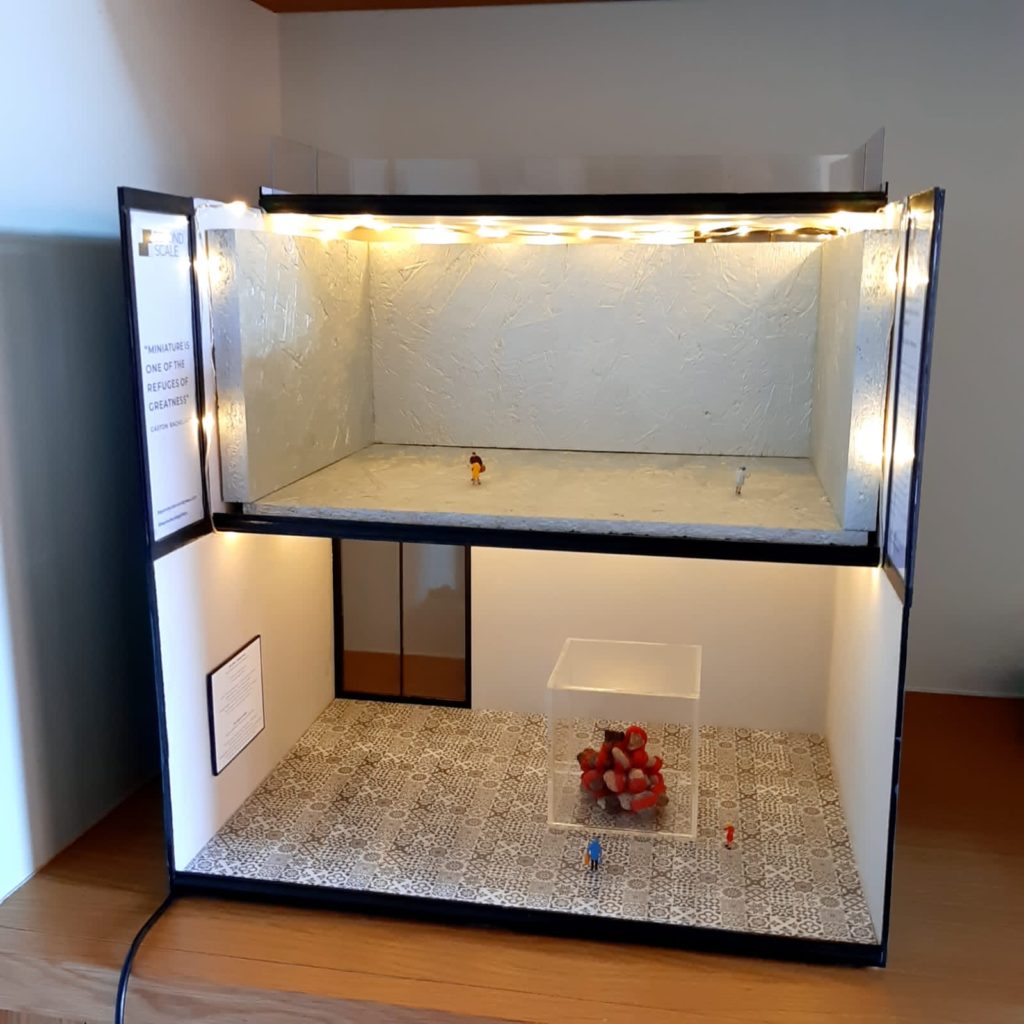
The exhibition Becoming silver – a before (the Bedale hoard), comprises of the two pieces; pre silver – present wax and the admix crucible made in response to the silver hoard this research is partly focused on; the Bedale hoard.
These pieces look to let a material and process ingrained in the life of the material life of silver speak. The lost wax, in the lost wax process of making certain metal forms, in this instance silver and the crucible container that is used to melt metals into more formalised structures. The tiny viewing visitors to the admix crucible can experience a vision of the journey much of the silver past and present has undertaken – it was more often than not reused, melted down and reformed. The 27 silver ingots that are part of the Bedale hoard will have gone through this process and now the tiny visitors to the Beyond Scale Gallery also find themselves in the middle of this admix melting pot.
Pre silver – present wax, looks to preserve (for a time) the materials that are used and lost in processes that make other materials materialise. These pre-materials play an important role for both maker and end material. Through the shape and the decoration they work with the maker to mark out the final materials’ potentiality. For many silver forms, wax has once been and now is their invisible skeleton.
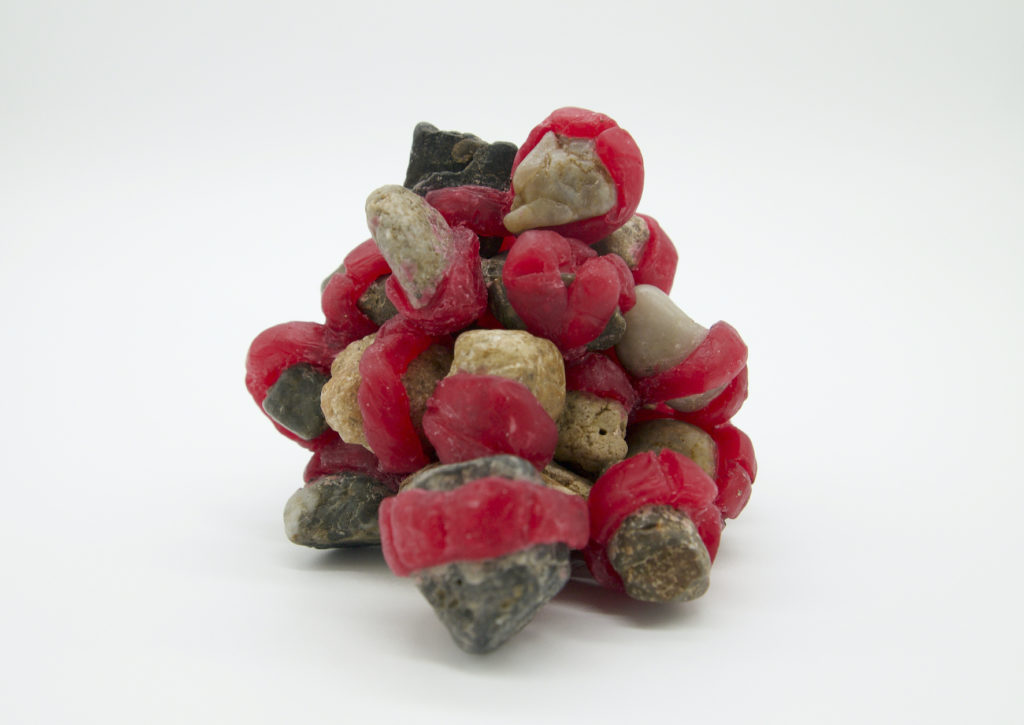
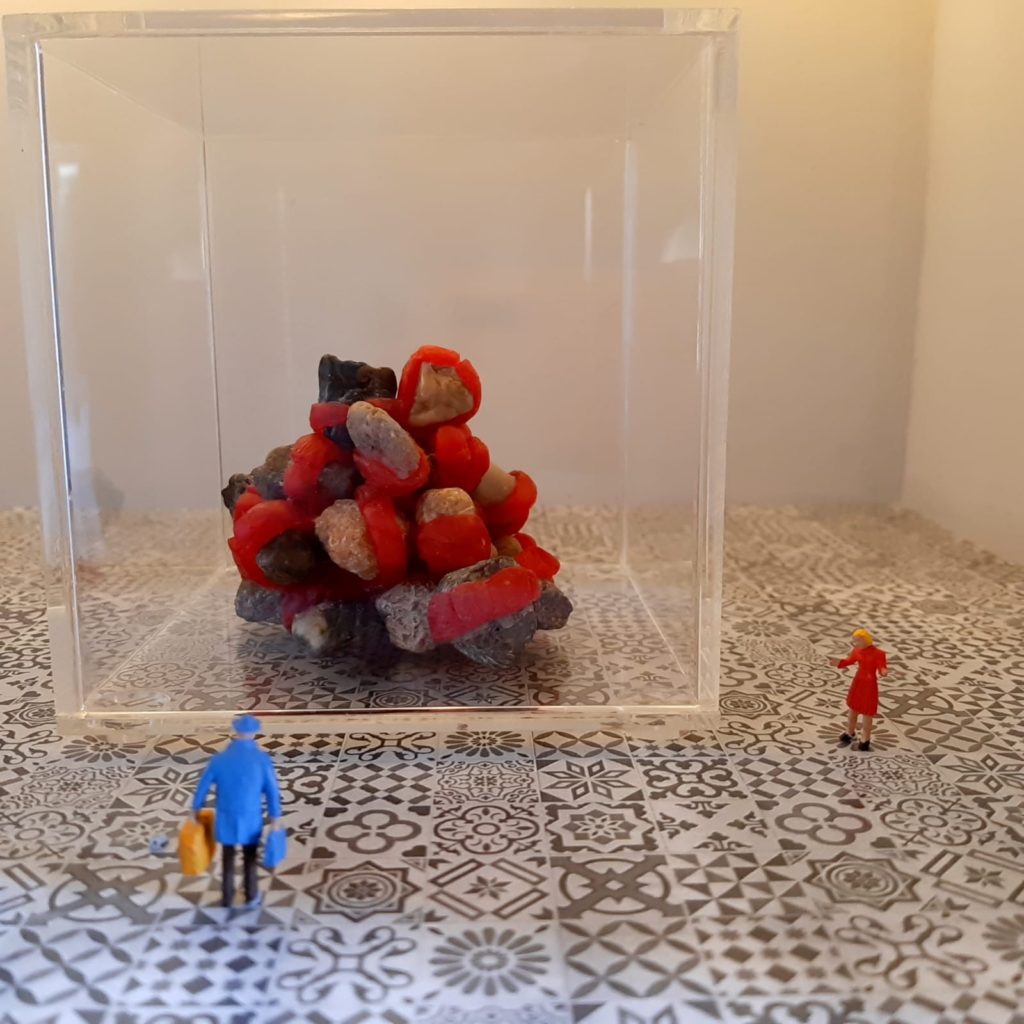
pre silver – present wax
a waning wax waiting to be lost
to be found again as silver;
“as wax I am the the shape maker; a material for fingers to play with
ideas become solids, I offer malleable possibility
I am the pre material, the material before
a forfeited material I will be destroyed by the material that will replace me
my vanishing act will be complete, I will not to return
but until then, I remain unaltered; unsilvered”
(Object – wax & river pebbles)
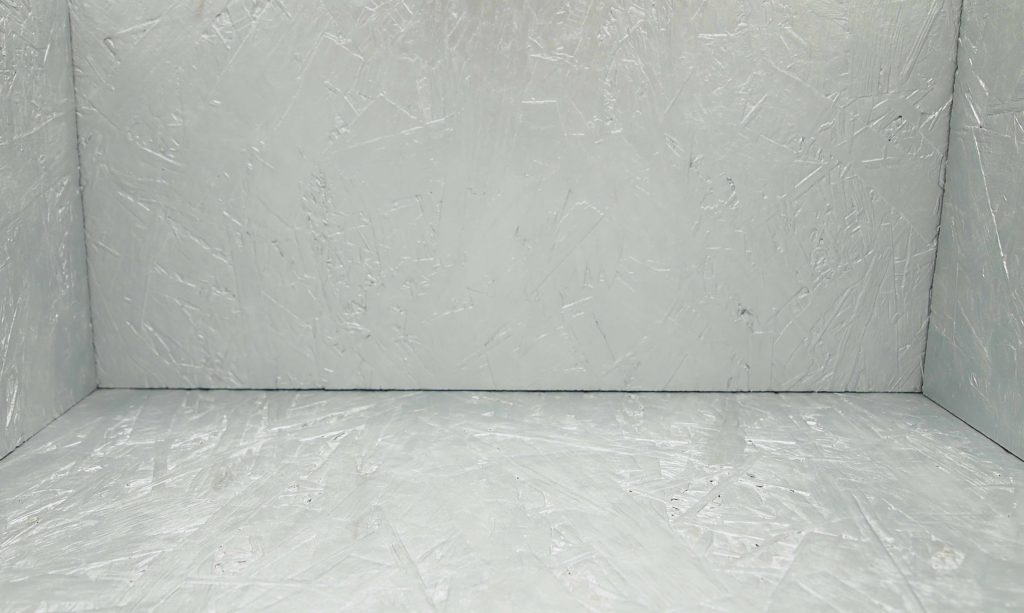
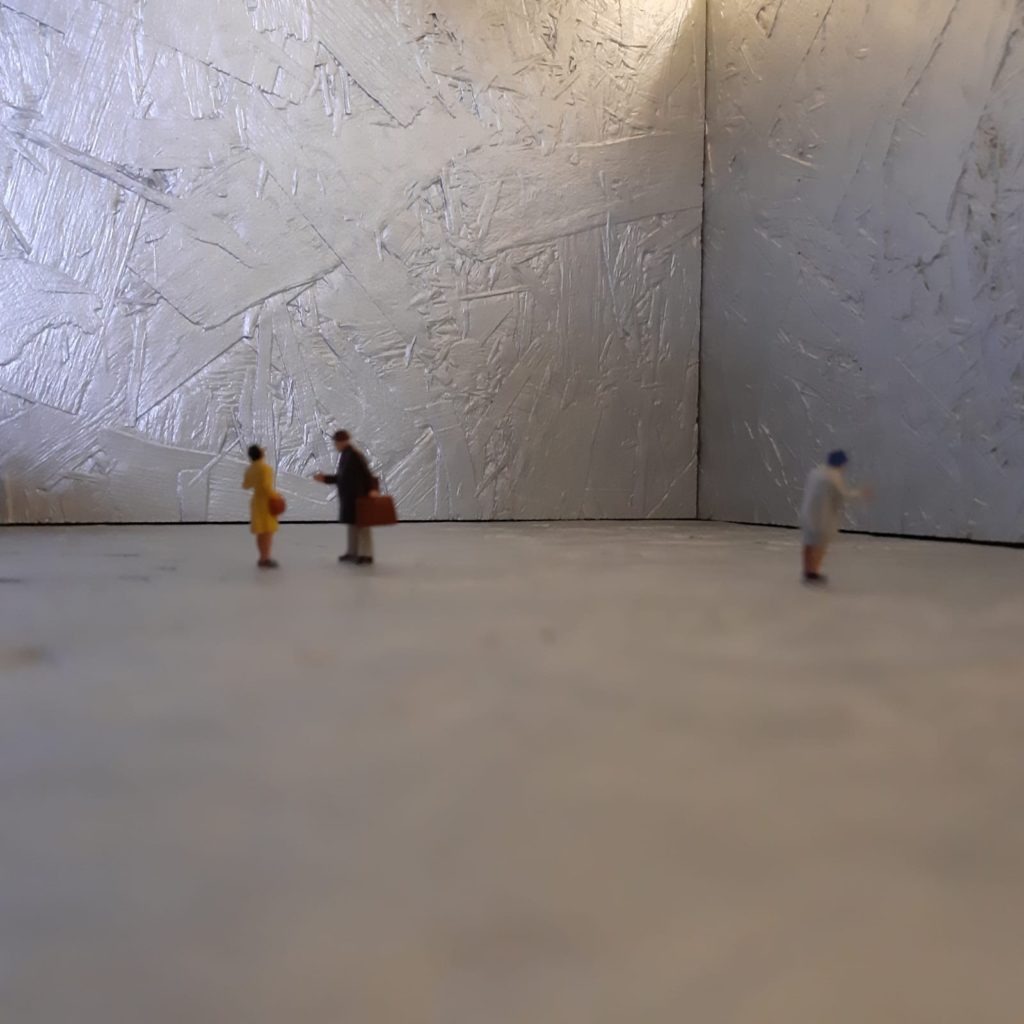

the admix crucible
“The parts, scraps, shavings, nicks, unused forms – I take them all
Old, new and the barely there are all welcome
I hold these silver bits whilst they melt, fuse, conform to me; to form another full me
I provide this admix silver with its new shape to face the world
Its new form, its international form to travel the world”
(Installation; OSB board & liquid acrylic)
____________________________________________________________________
Gold, Garnet, and Lead: A Response to the West Yorkshire Hoard
International Medieval Congress 2020
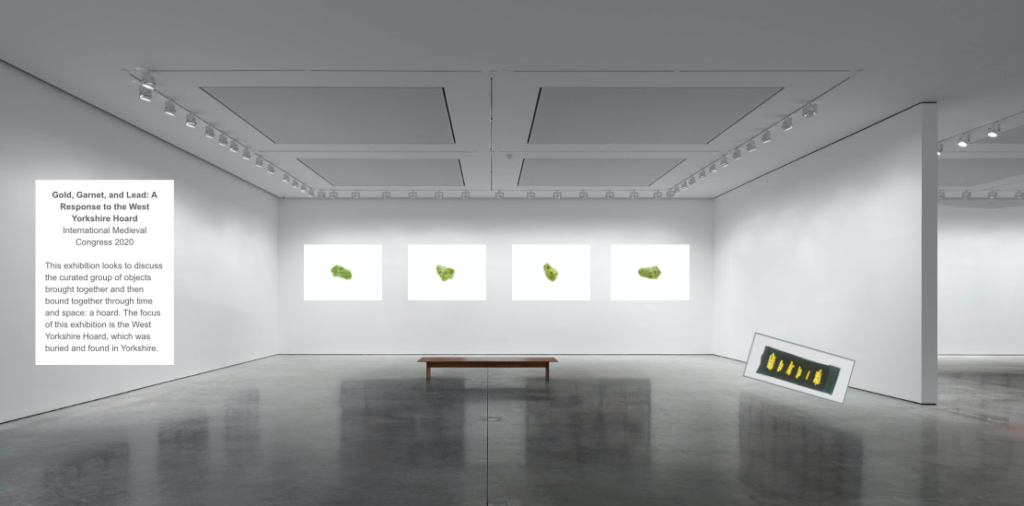
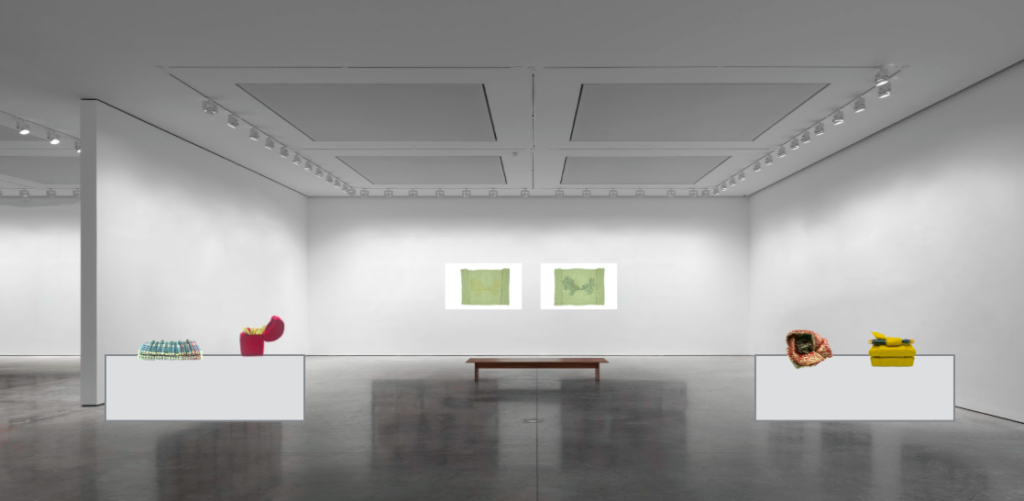
This online exhibition looks to discuss the curated group of objects brought together and then bound together through time and space: a hoard. The focus of this exhibition is the West Yorkshire Hoard, which was buried and found in Yorkshire.
The West Yorkshire Hoard; is an early medieval hoard, consisting of seven objects – four gold rings, one gold ingot and one gold brooch fragment. The seventh object is a lead spindle whorl.
Through a series of new artwork, made in response to this hoard, the exhibition aims to spark discussion about the material binds that brought these objects together. By considering their physical and material makeup as the catalyst for their eventual hoard-bound state, this next stage in these objects’ use-life can be contemplated.
To take a virtual walk around this exhibition, please visit; Gold, Garnet, and Lead: A Response to the West Yorkshire Hoard
_____________________________________________________________________
Transfer Exhibition, July 2019 – To Earmark
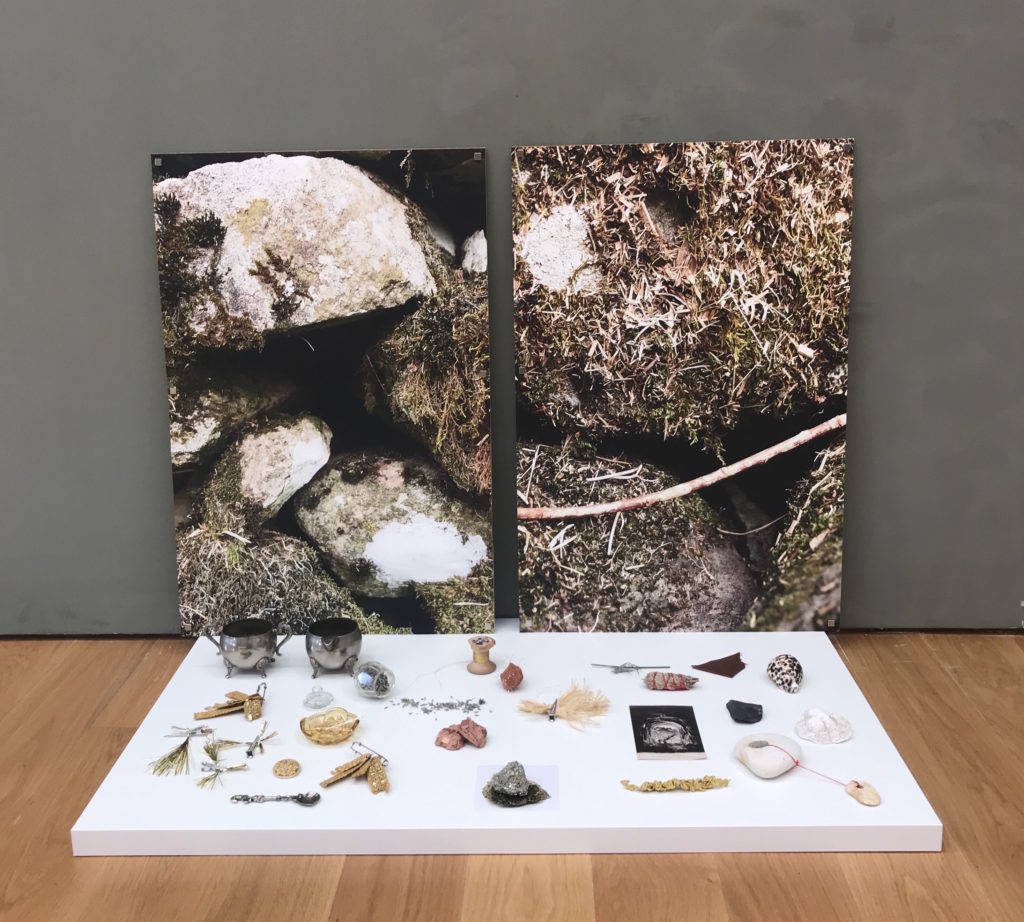
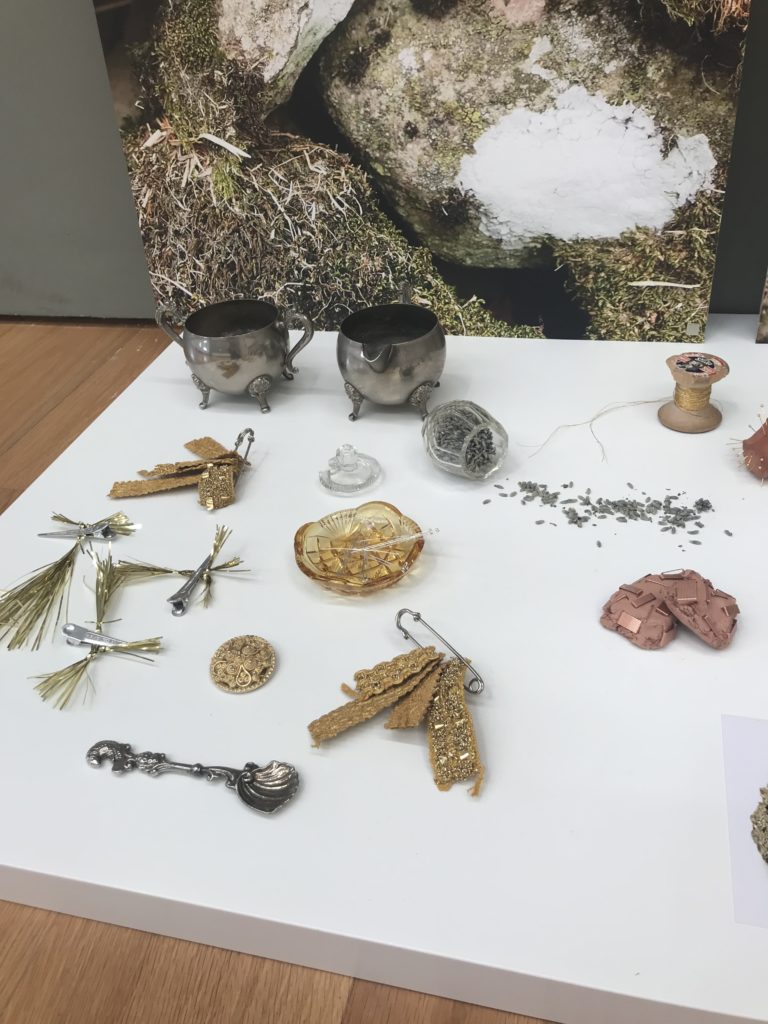
A hoard you say (dual) June 2019
2 Photographs – 3 sets of small objects (approx. 90cm)
A hoard you say (dual) looks to visualise what we might perceive a hoard to look like; what it should or could contain and where it might be found. All the sets of objects are mixed materials of mixed value but are laid according to their face value i.e. they look gold, therefore, they are gold. The first set of objects represent a higher physical value of objects (mainly gold and silver) the second set is an interchange between materials, an admixture between the first and third set of objects. The third set of objects have a simpler material makeup. They might hold an emotional value or a belief or knowledge value.
Size: approx. 90cm (w) x 50cm (h)
Material: 2 Photographs – 3 sets of small objects
Exhibited: Solo exhibition – ‘To earmark’ | Project Space, School of Fine Art, Art History, Cultural Studies, Leeds University
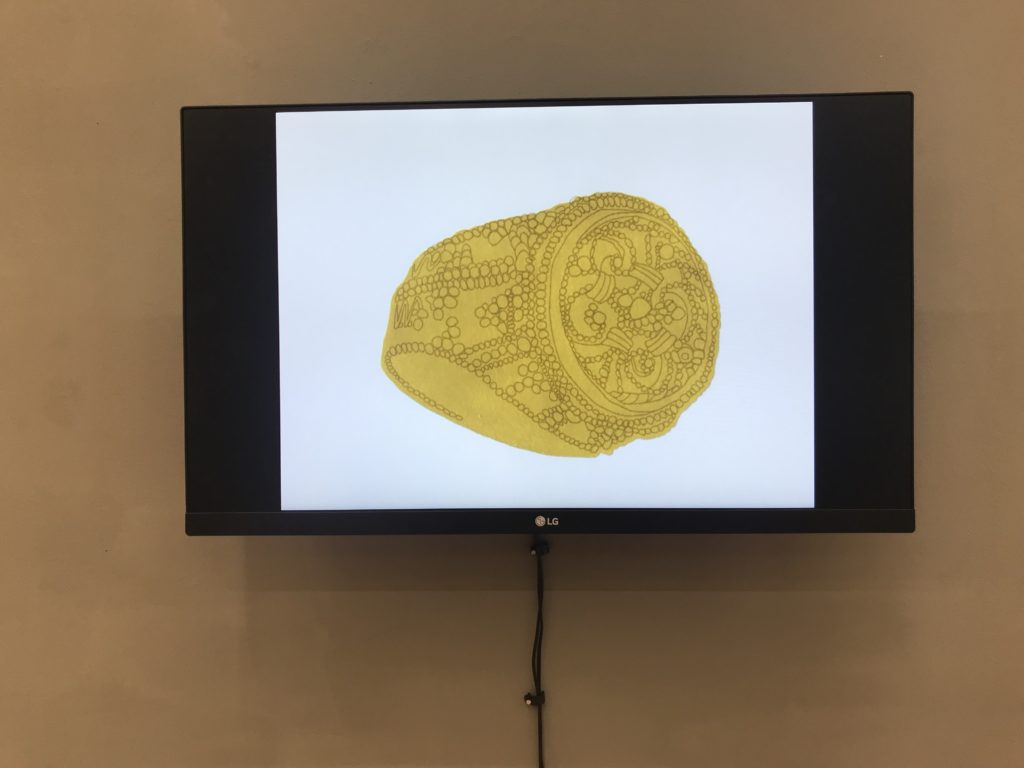
Overlie Film piece (a response to The West Yorkshire Hoard) June 2019
Treatment: Disarray
Outline, Material, Detail – Overlie
This film is made from drawings based on the photographs taken by Leeds Council – © Leeds Museums and Galleries –https://creativecommons.org/licenses/by-nc-sa/3.0/ https://www.mylearning.org/stories/the-west-yorkshire-hoard-medieval-treasure/resources
Exhibited: Deconstructing the West Yorkshire Hoard | Studio G.09, School of Fine Art, Art History, Cultural Studies, Leeds University – July 2019
Solo exhibition – To earmark | Project Space, School of Fine Art, Art History, Cultural Studies, Leeds University – July 2019
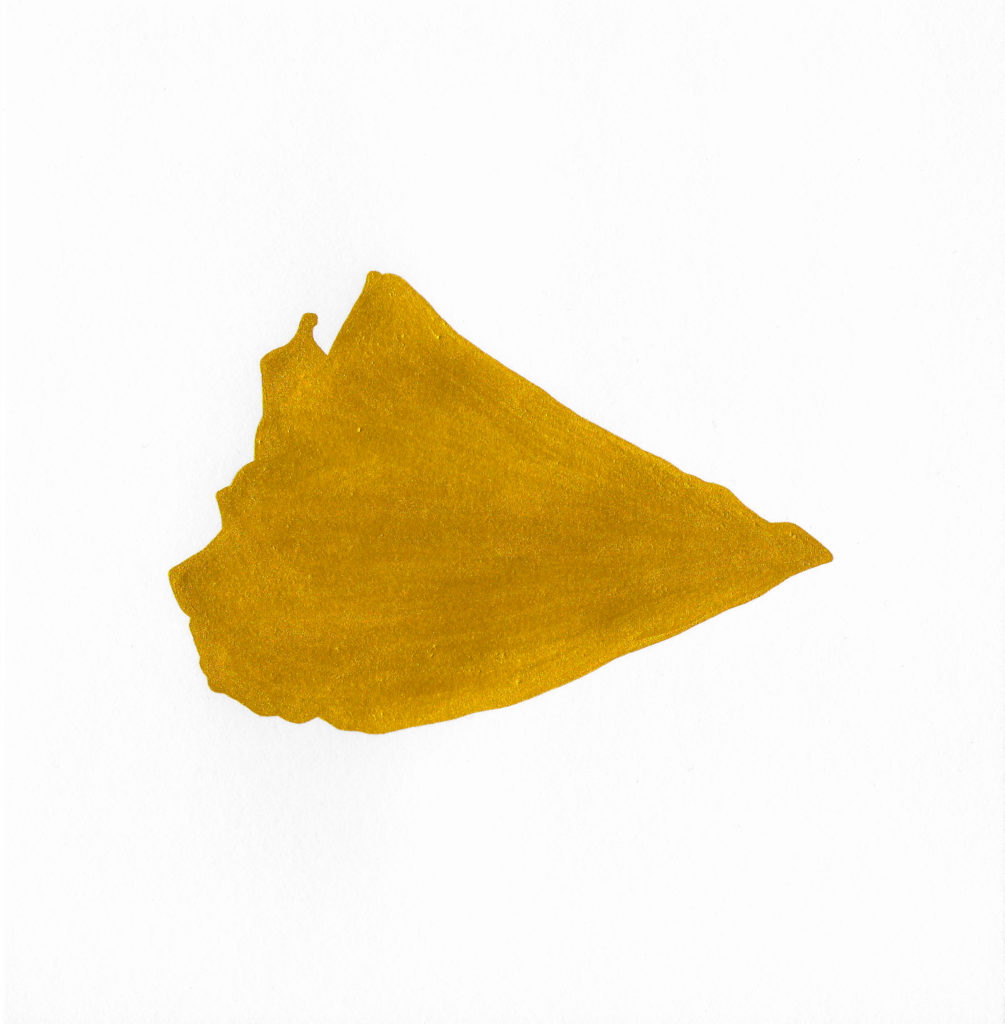
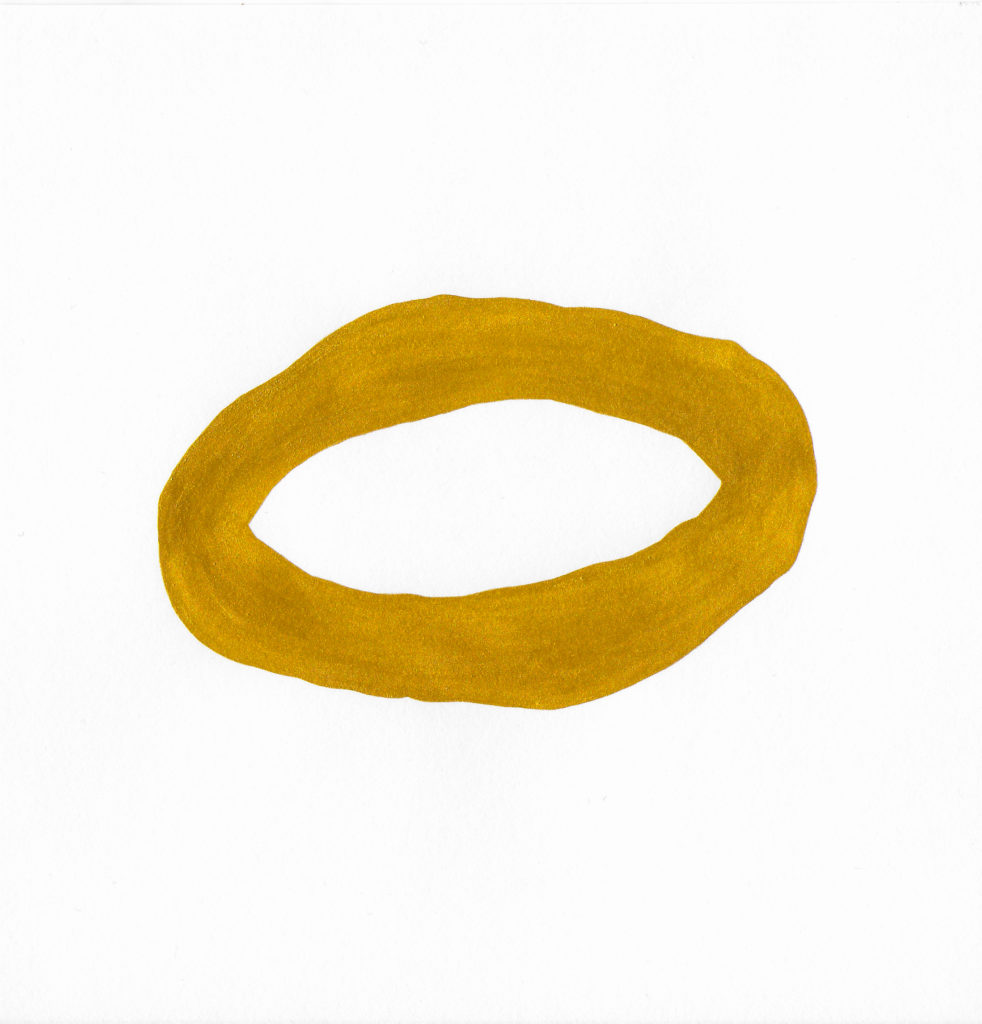
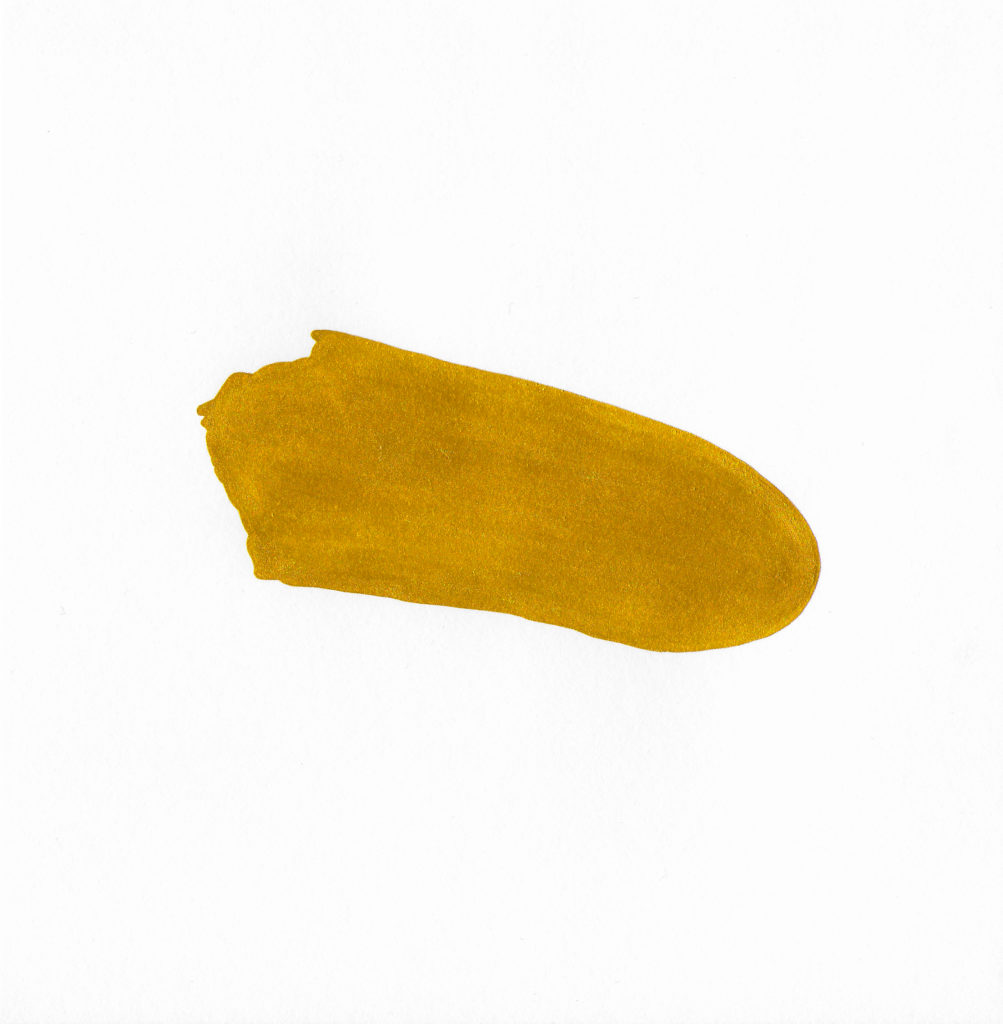
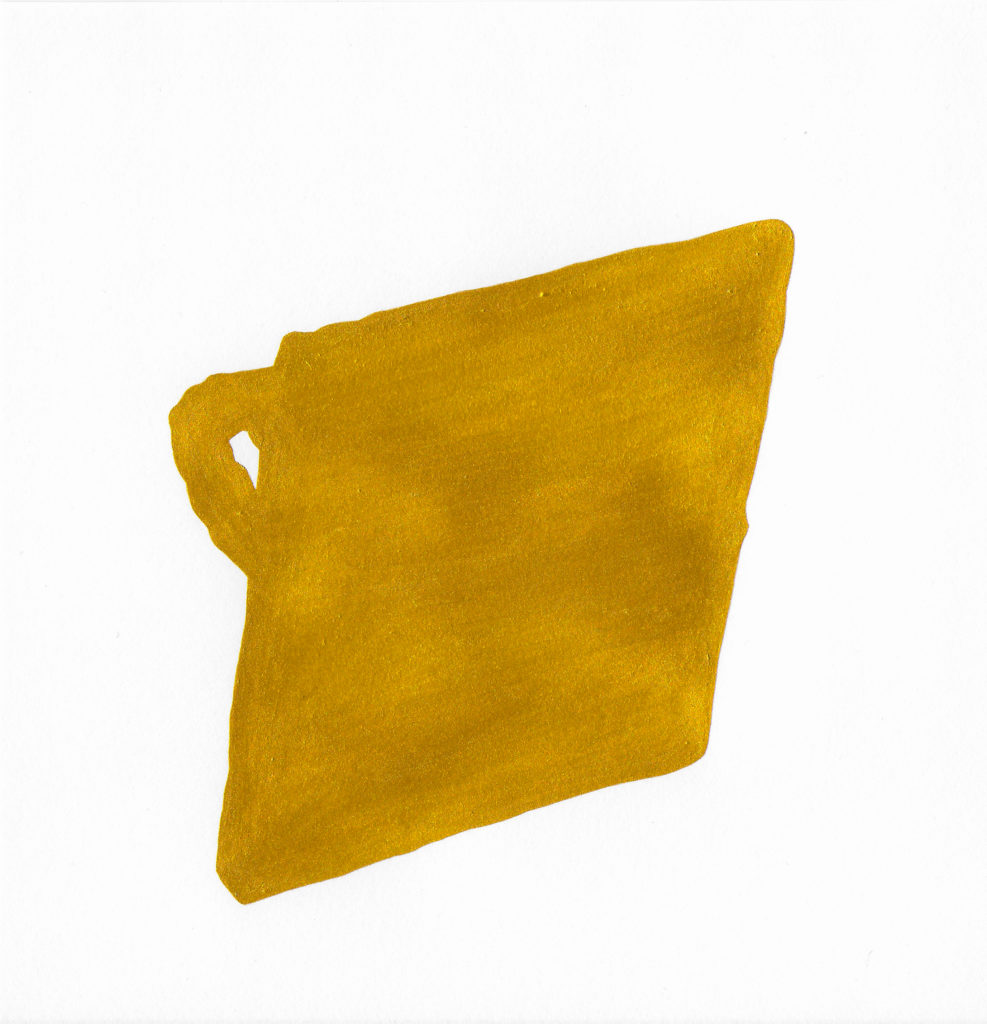
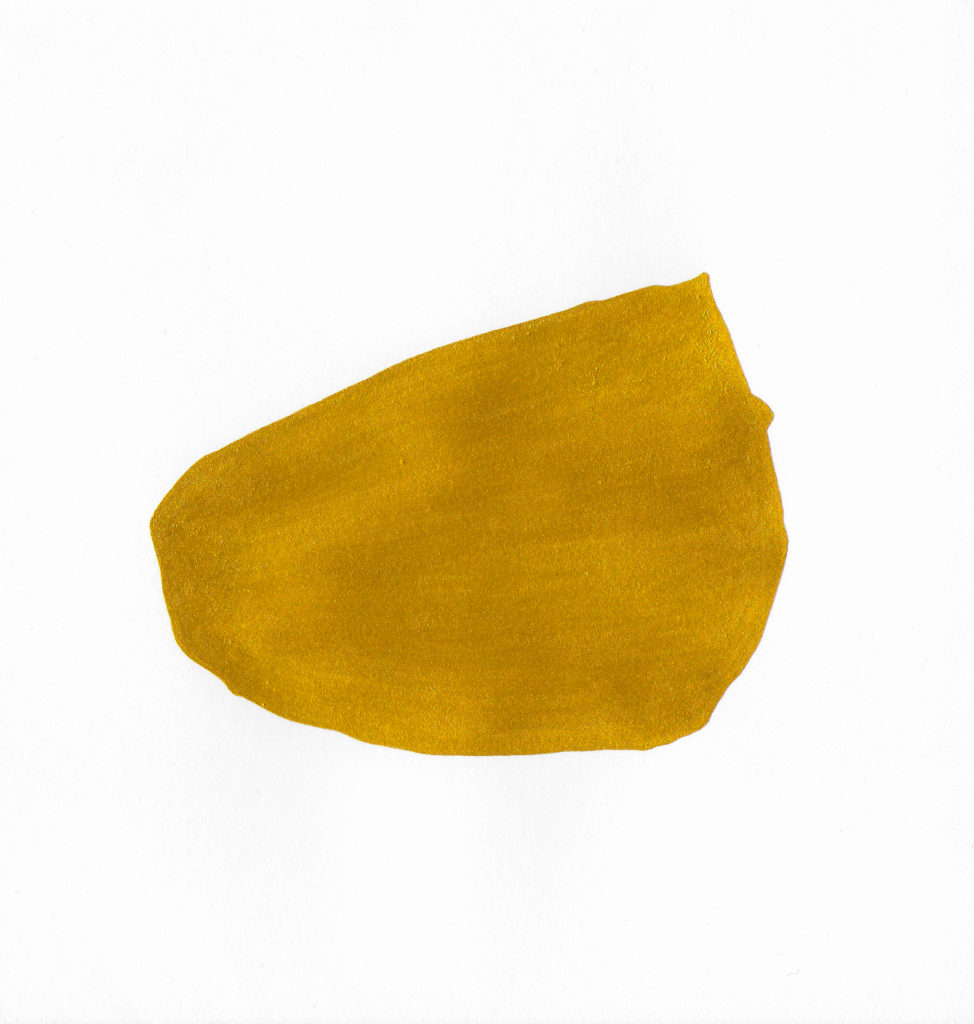
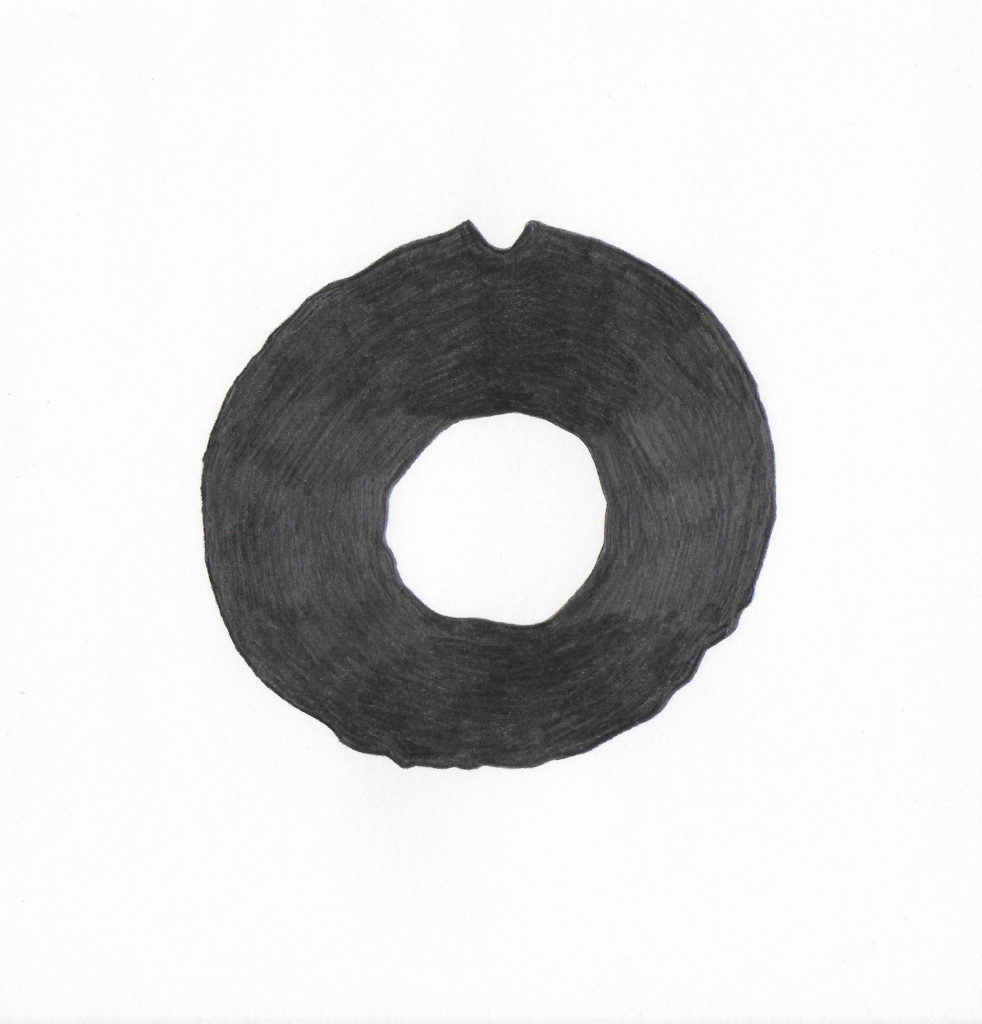
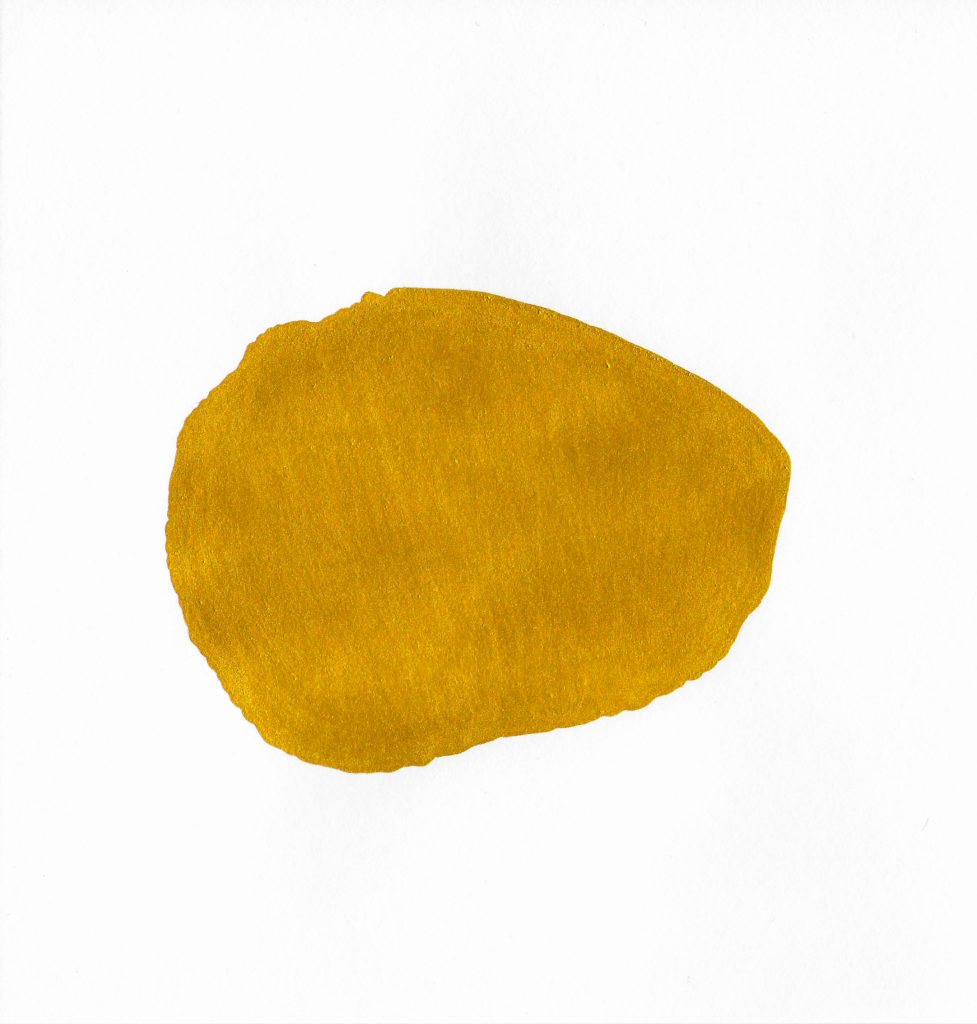
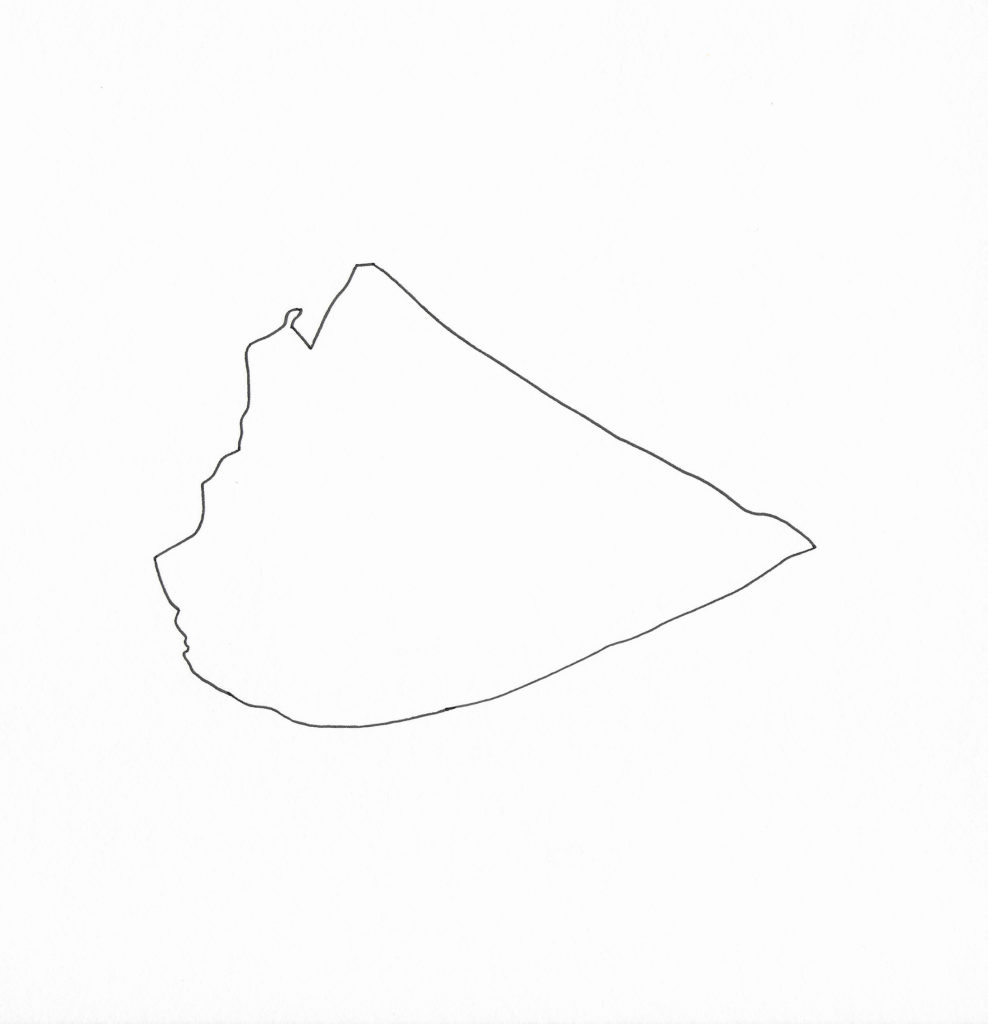
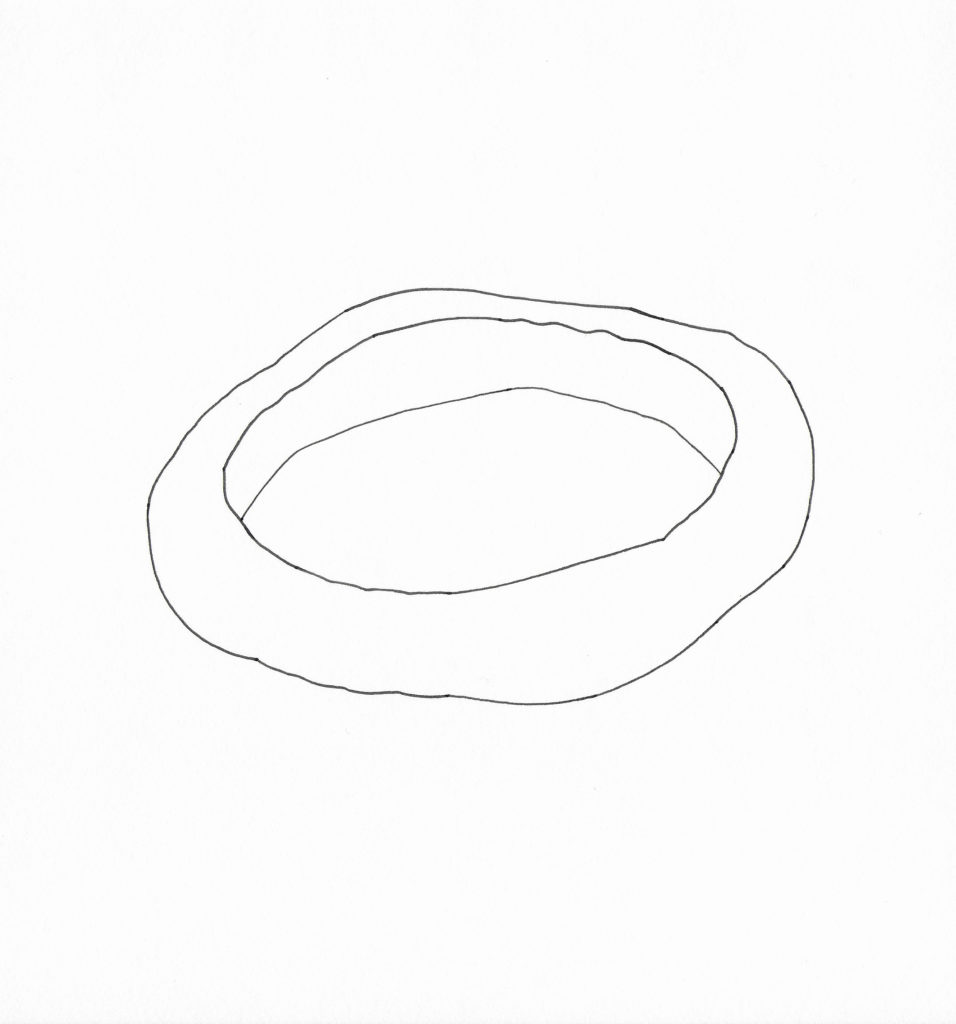
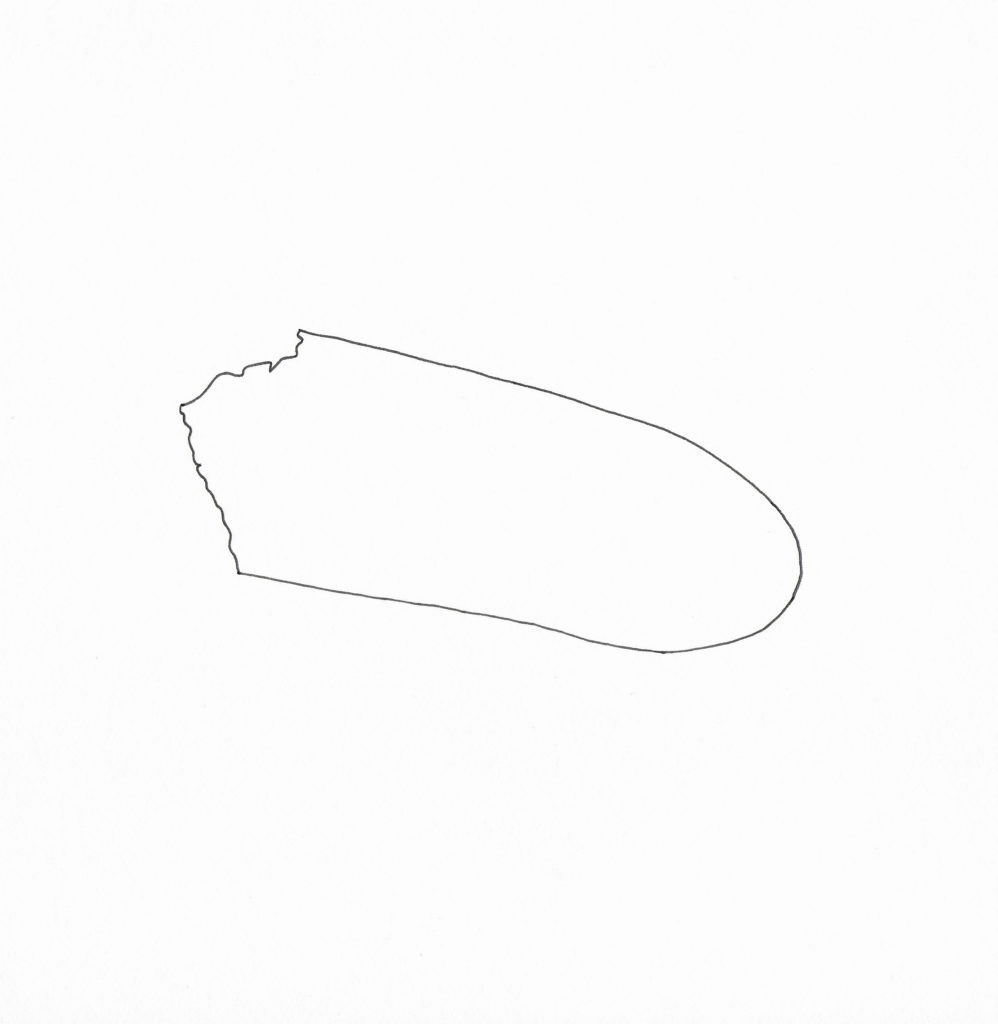
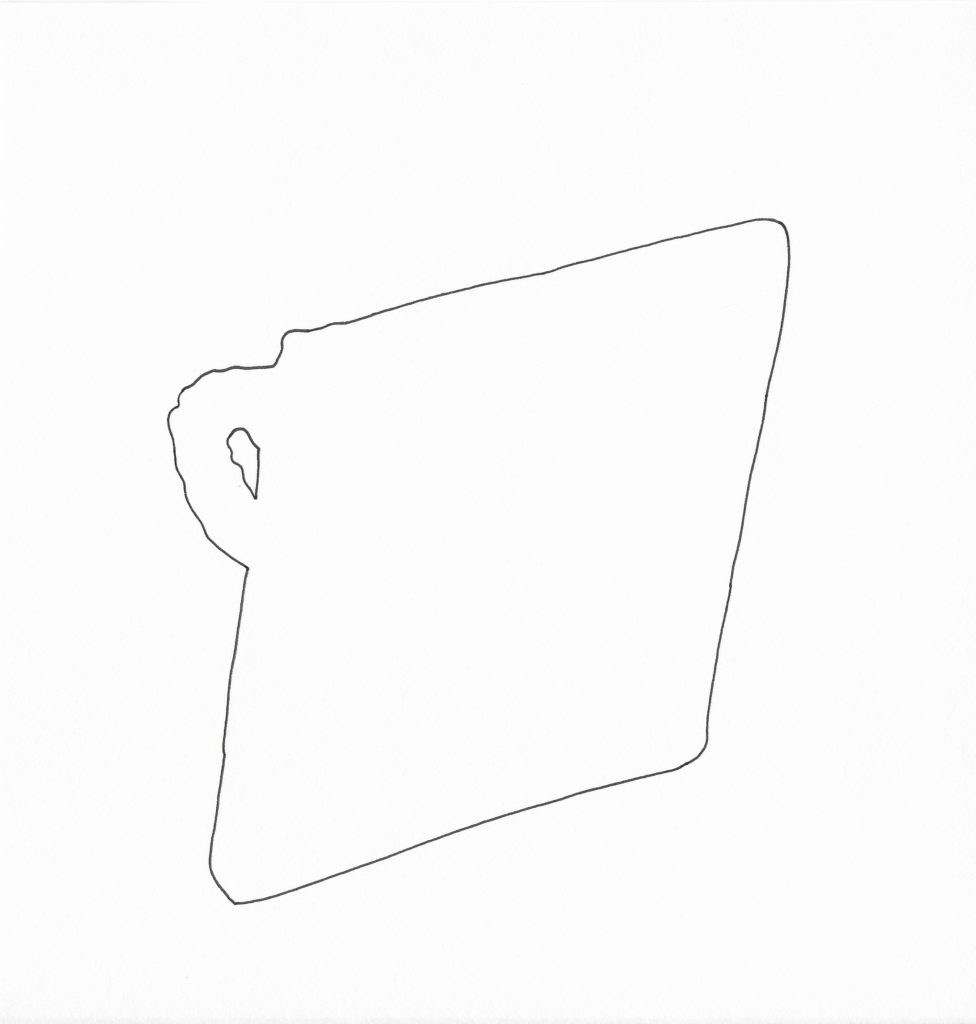
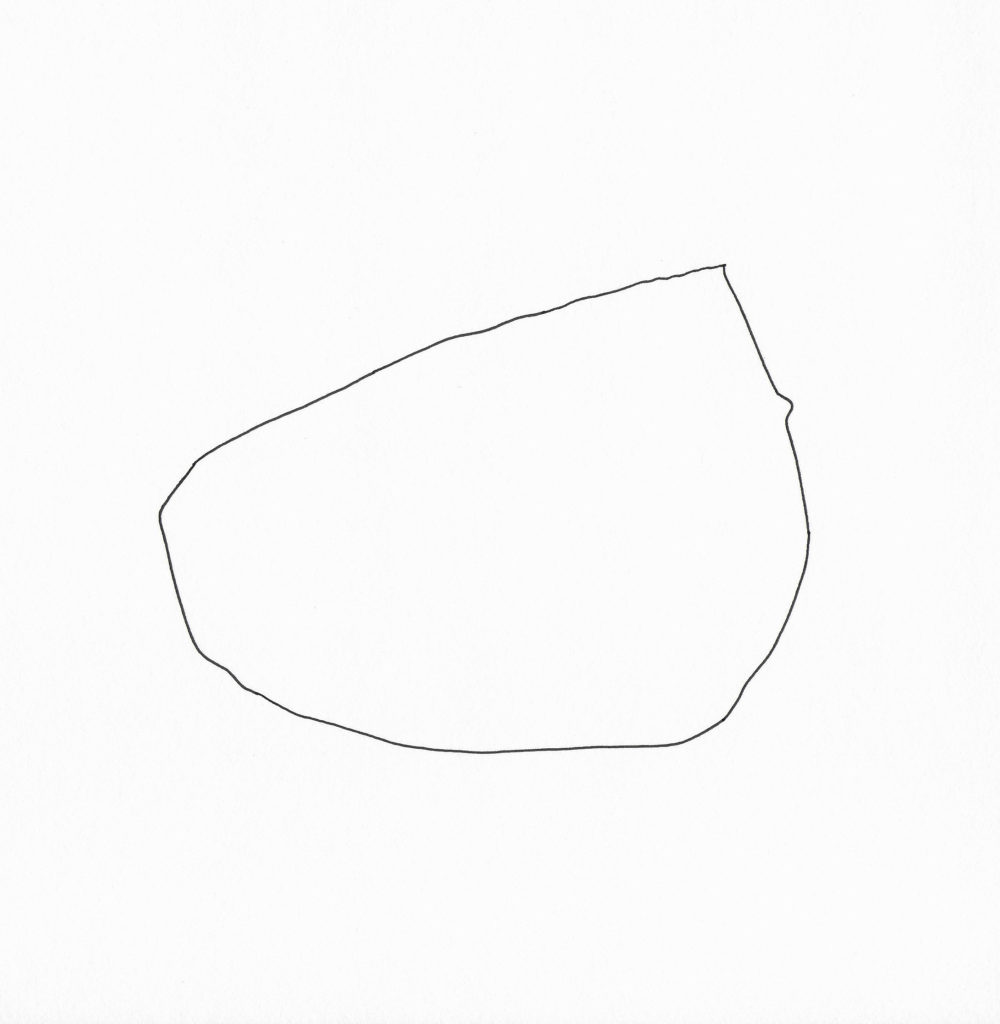
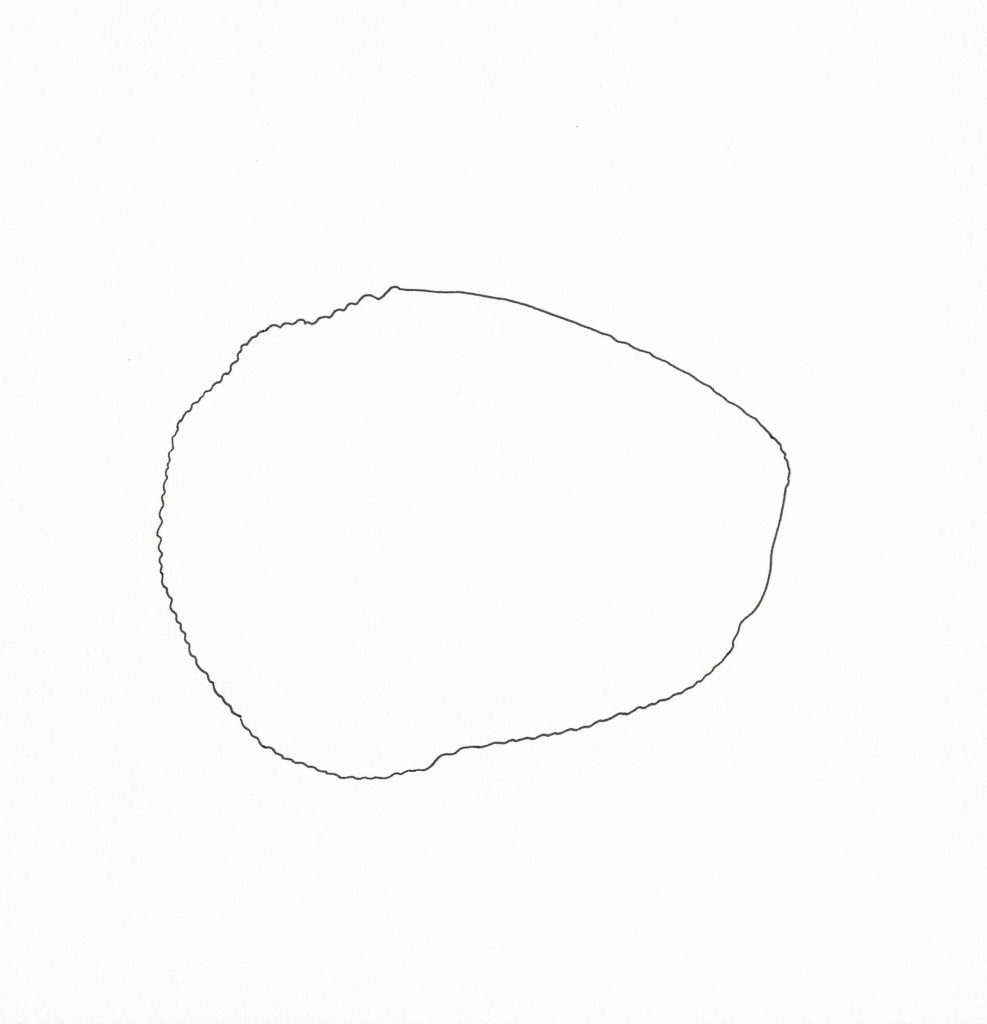
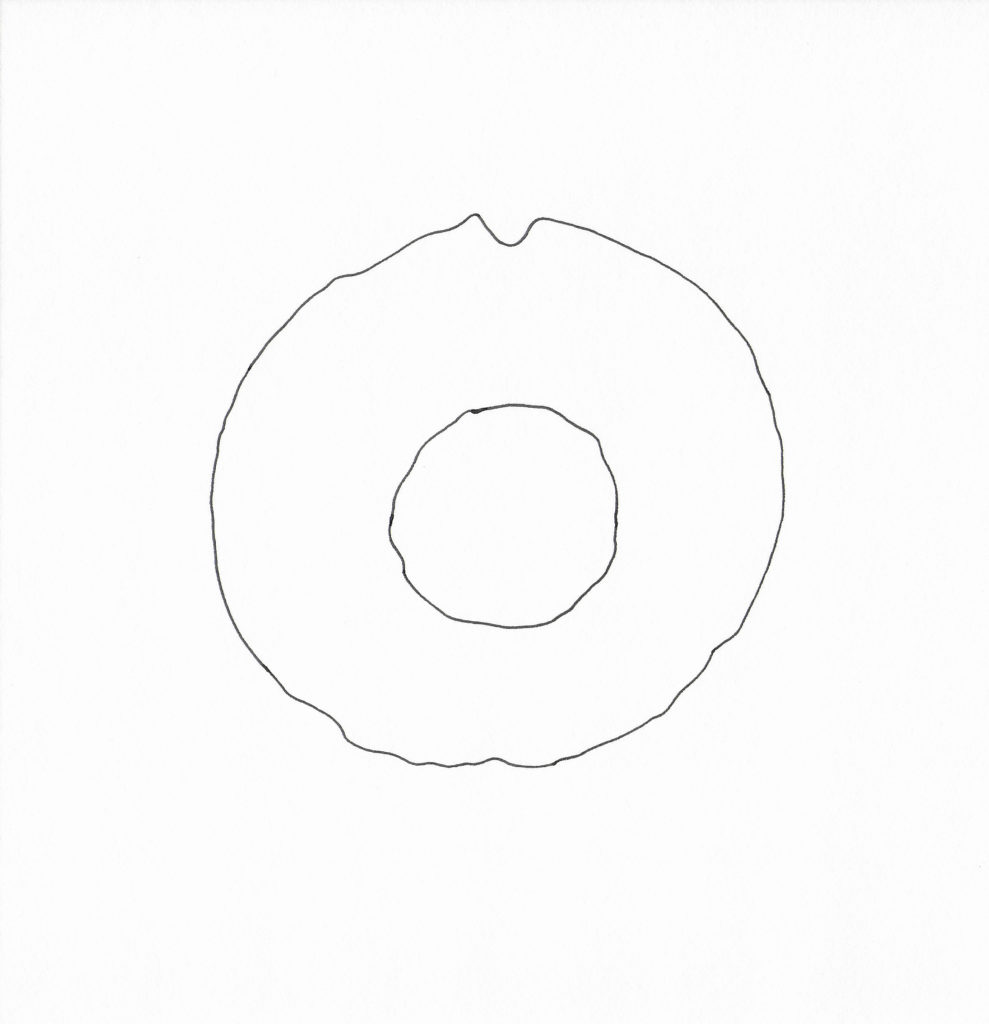
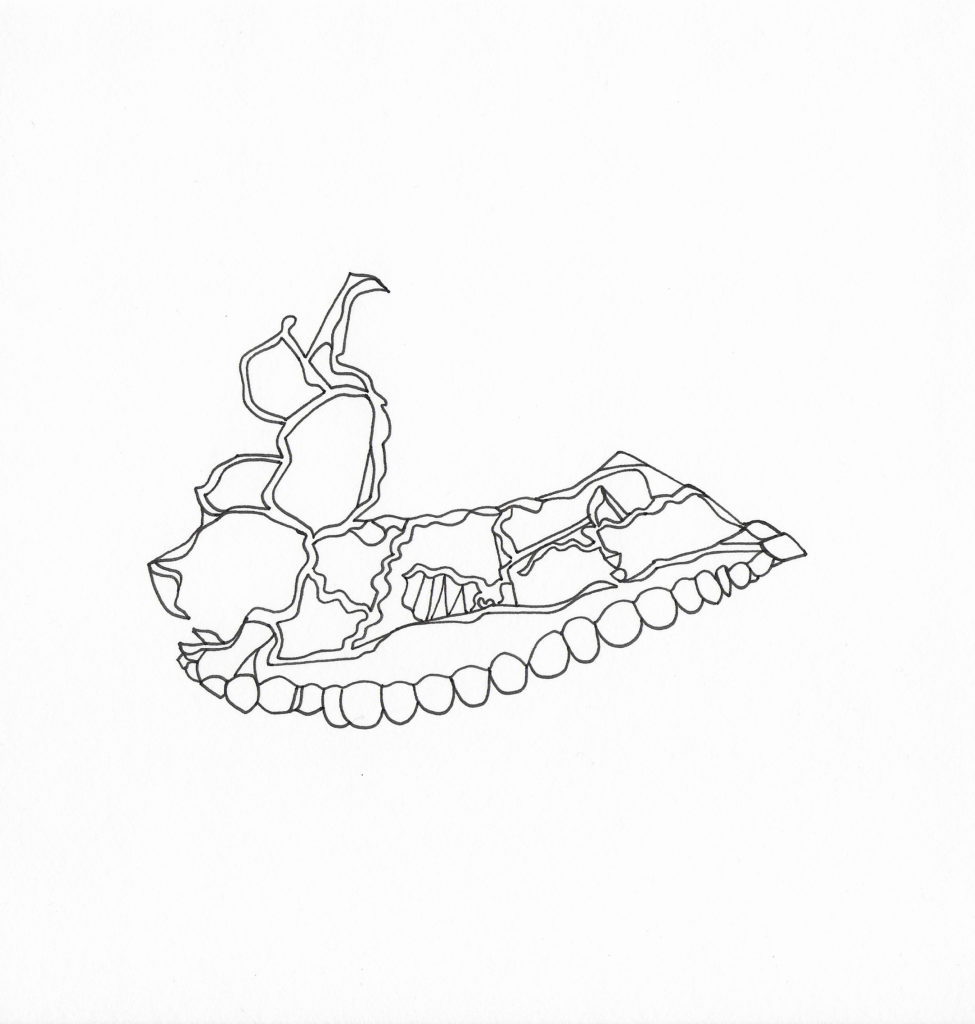
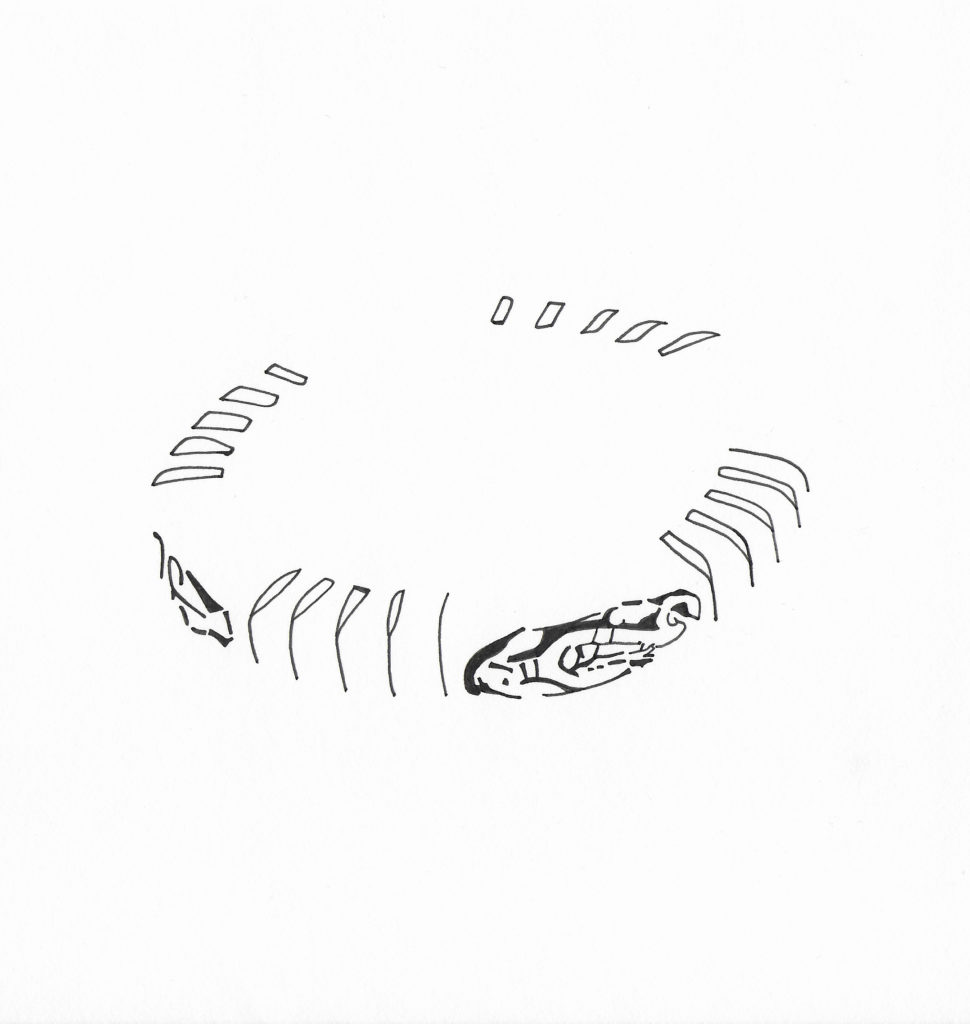
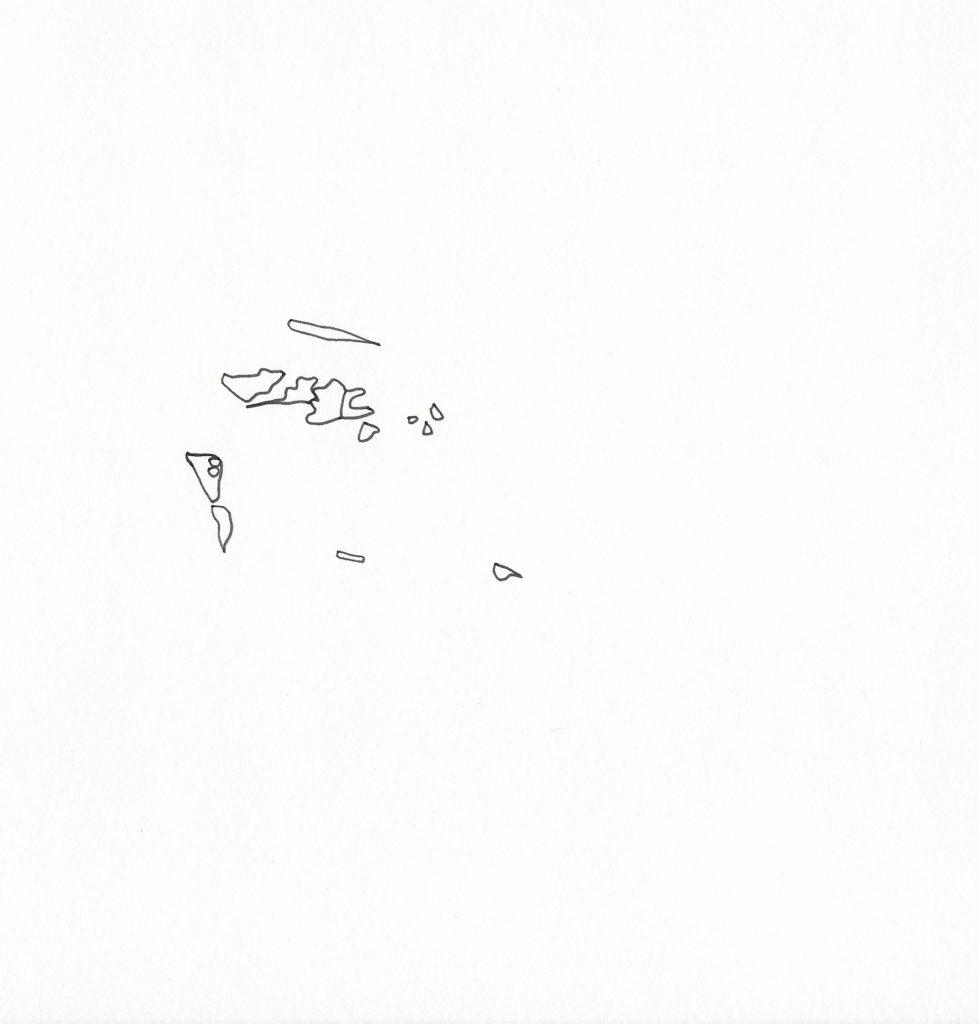
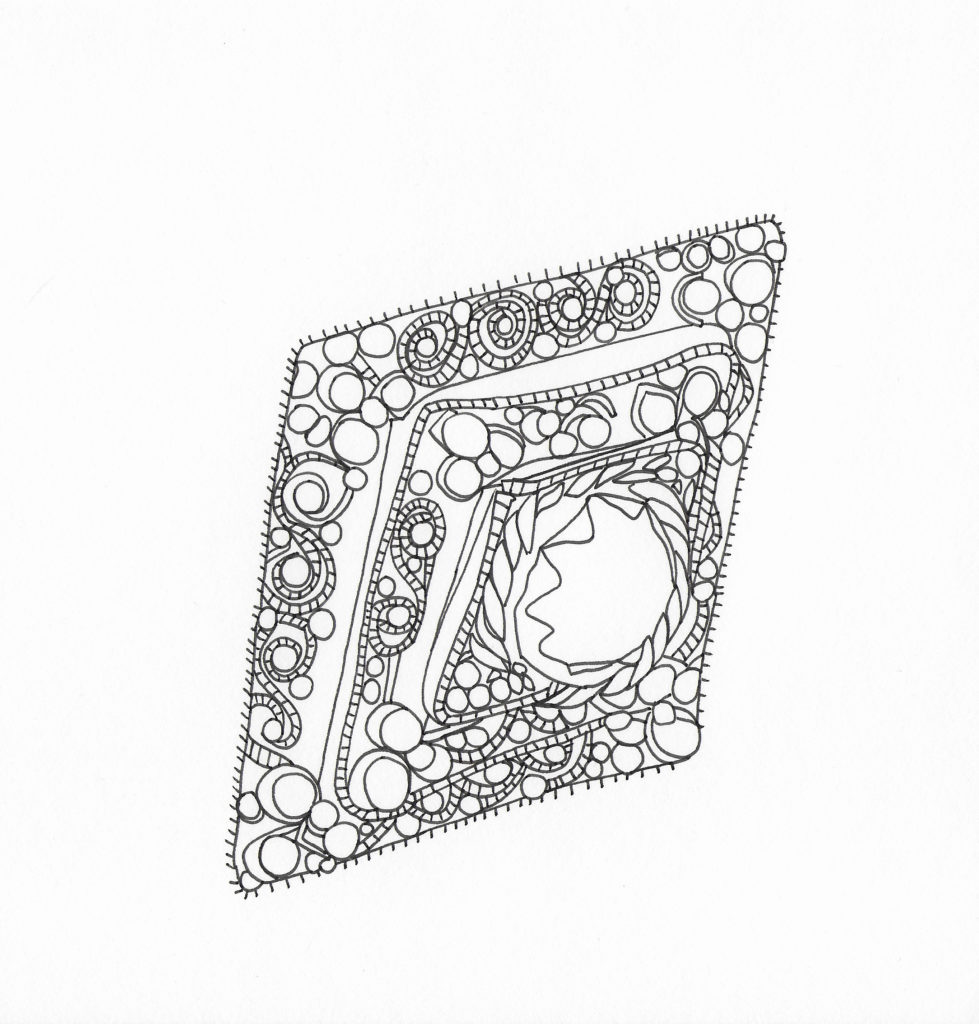
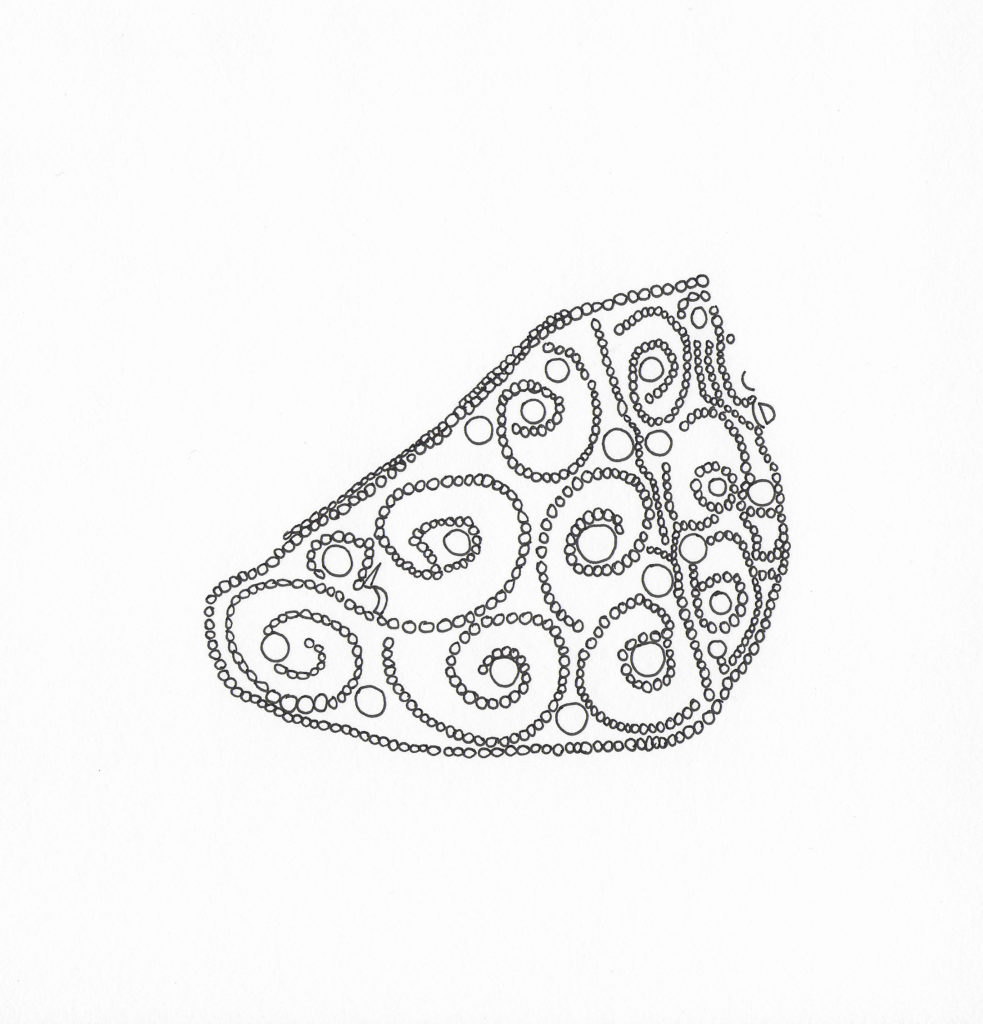
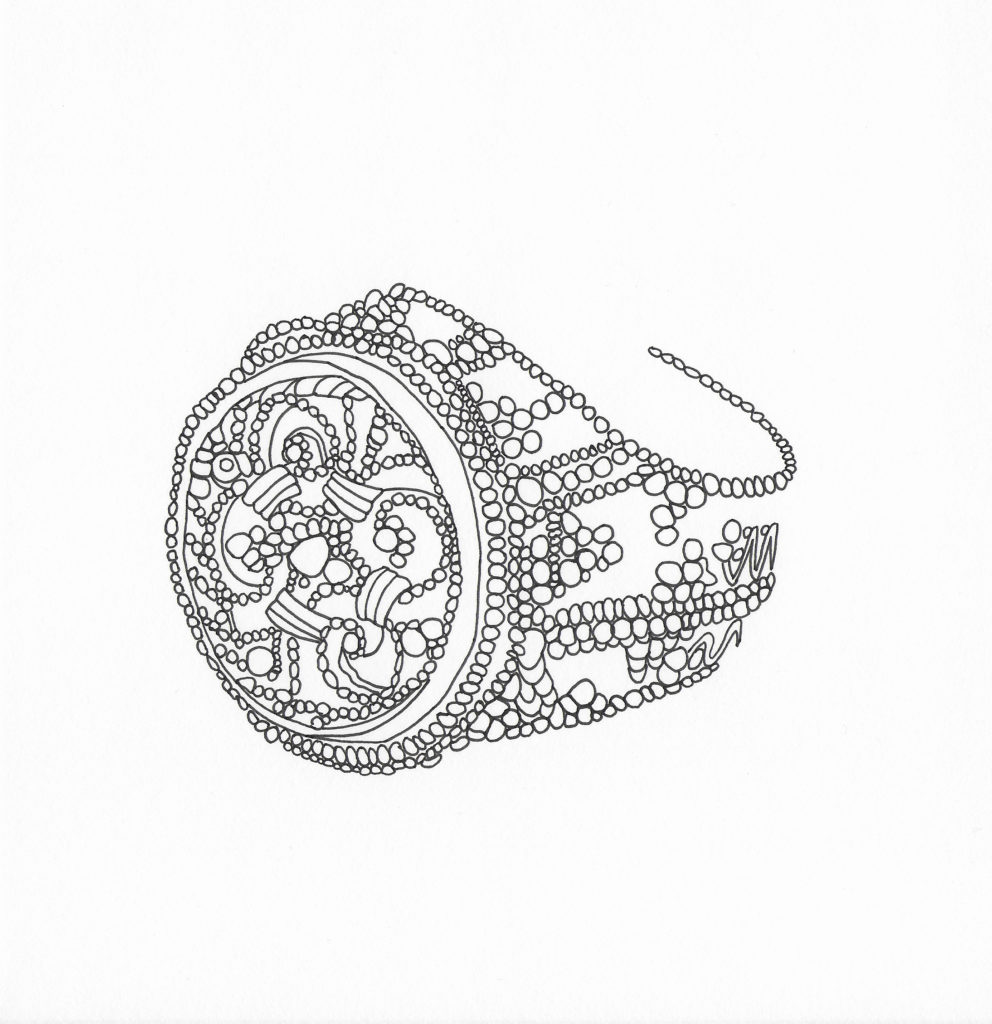
Overlie – the drawings (a response to The West Yorkshire Hoard) May 2019
Treatment: Arrayed
Each drawing was produced to show a visual breakdown of the visual components that make up the 6 gold and 1 lead object in this hoard. The outline and detail drawings are made using black Indian ink. The material gold drawings are made using gold ink, each with 6 layers of ink; to denote their fellow hoard gold objects. The material lead drawing is made with graphite pencil. Graphite being the material referred to as lead; its much safer and less poisonous mark making counterpart.
These drawings are based on the photographs taken by Leeds Council – © Leeds Museums and Galleries – https://creativecommons.org/licenses/by-nc-sa/3.0/ https://www.mylearning.org/stories/the-west-yorkshire-hoard-medieval-treasure/resources
Material: Paper, ink – black and gold, pencil
Size: 19cm(w) x 19.5cm(l)
Exhibited: Deconstructing the West Yorkshire Hoard | Studio G.09, School of Fine Art, Art History, Cultural Studies, Leeds University – July 2019
Solo exhibition – To earmark | Project Space, School of Fine Art, Art History, Cultural Studies, Leeds University – July 2019
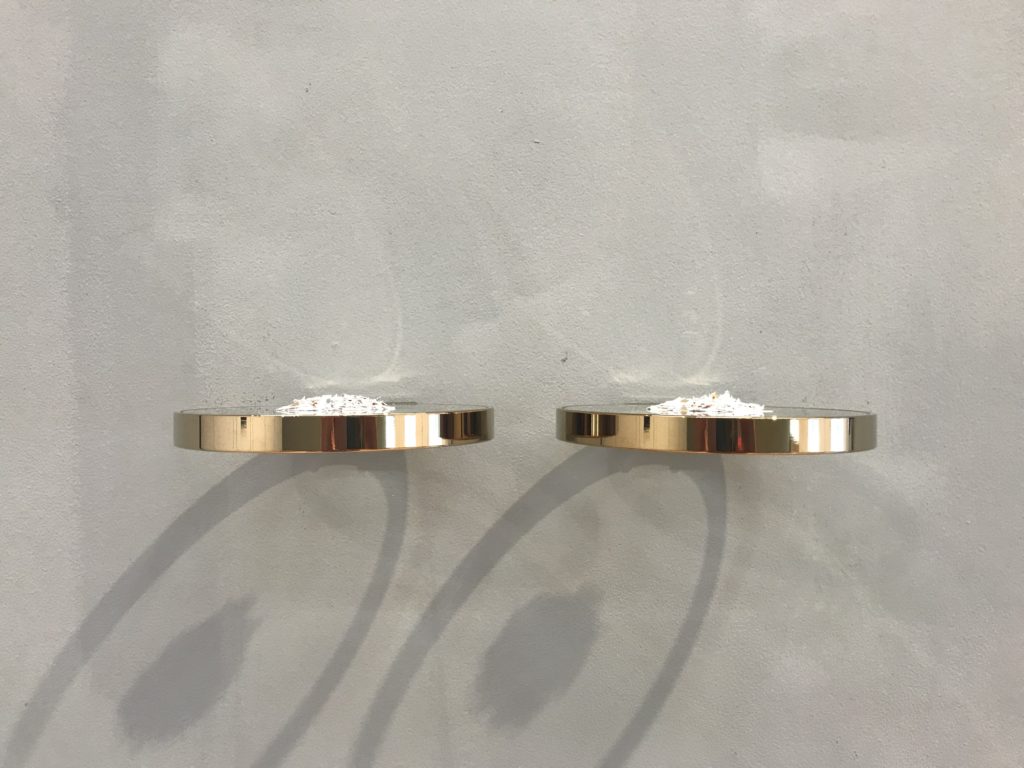
Nicks – a physicality (The West Yorkshire hoard) April 2019
The physical remnants of the Golder than gold, each set are the nicked card cuts. The set on the left is No. 1-6 – and the set on the right is No. 1-6 + Through the physical act of cutting, these smaller card cuts have given the card pieces their worth, their place in the work Golder than gold. Hence the place of the cut in this value cycle can be considered. If made from the real material they represent, they would be kept, reused, recast into something else. As it is with their card genetic makeup, they can just be.
Size:
Material: Object – 1 set, Card – gold, silver, copper
Exhibited: Solo exhibition – To earmark | Project Space, School of Fine Art, Art History, Cultural Studies, Leeds University
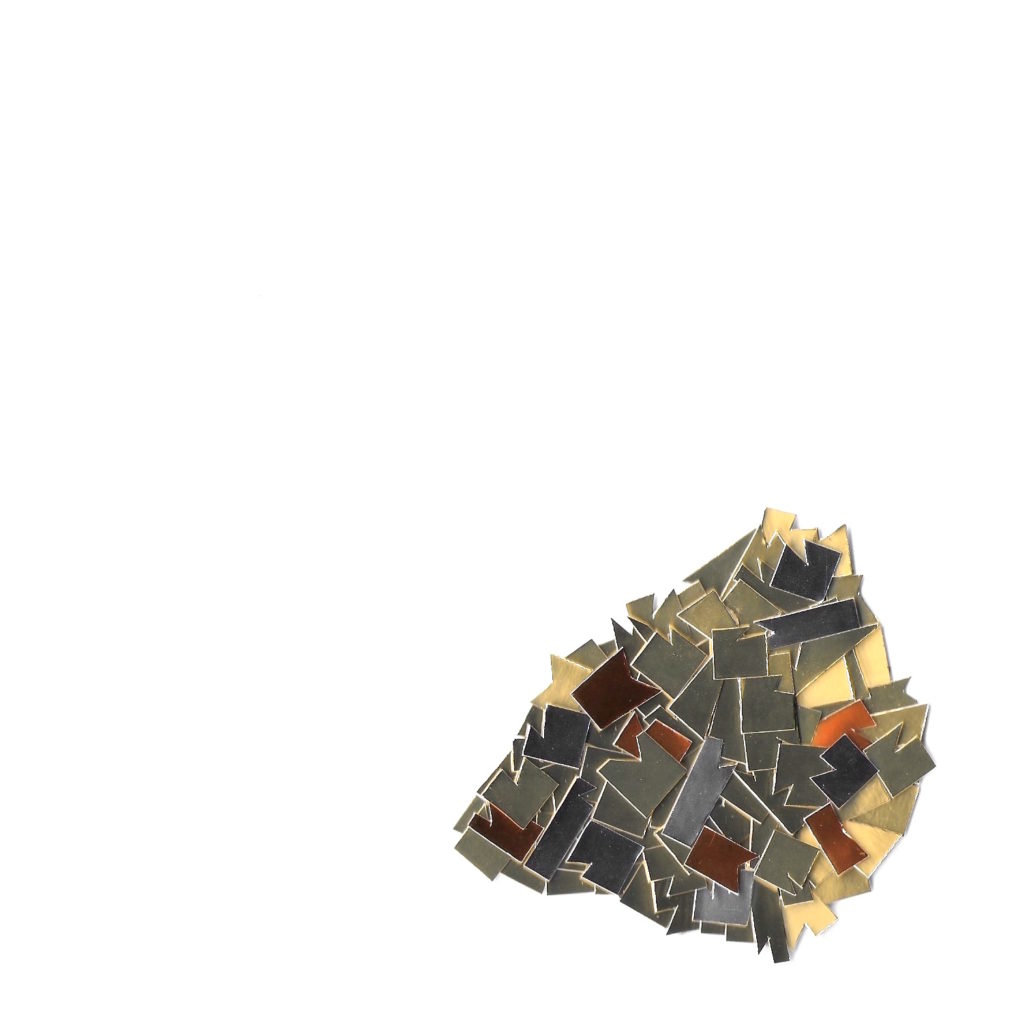
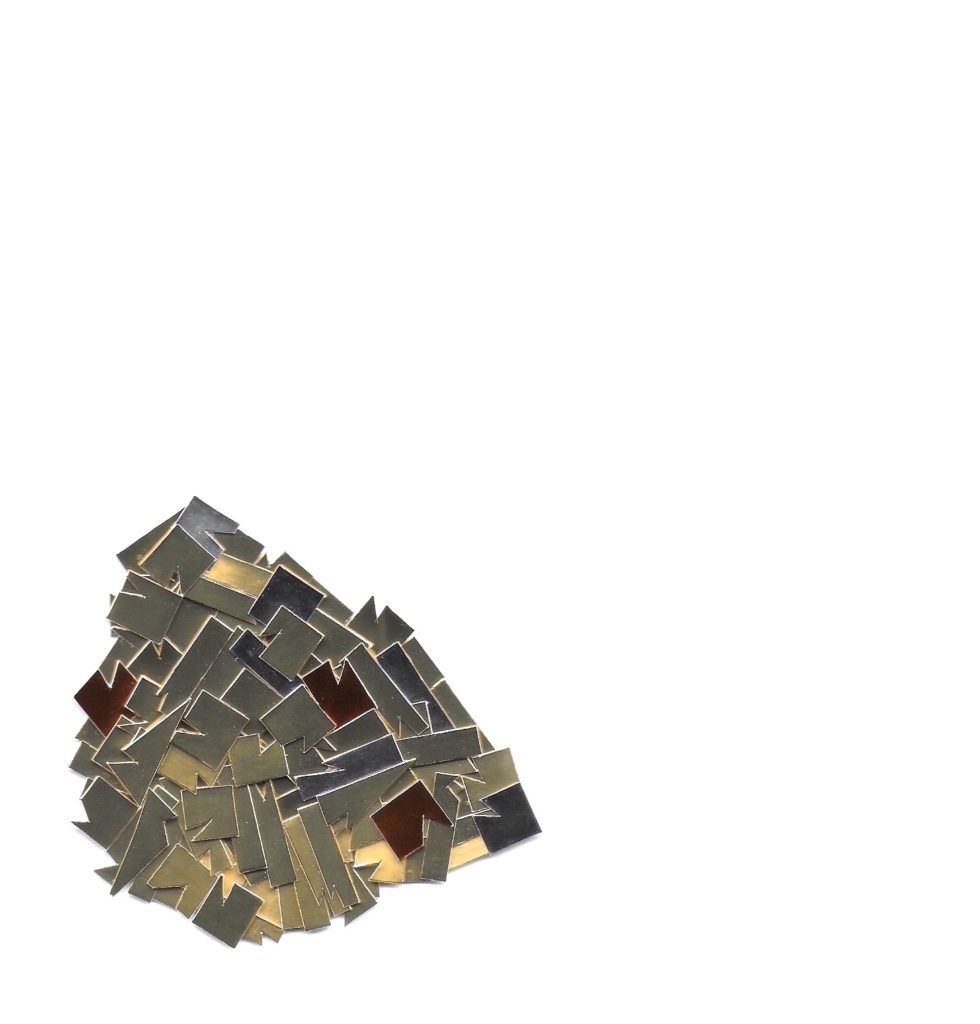
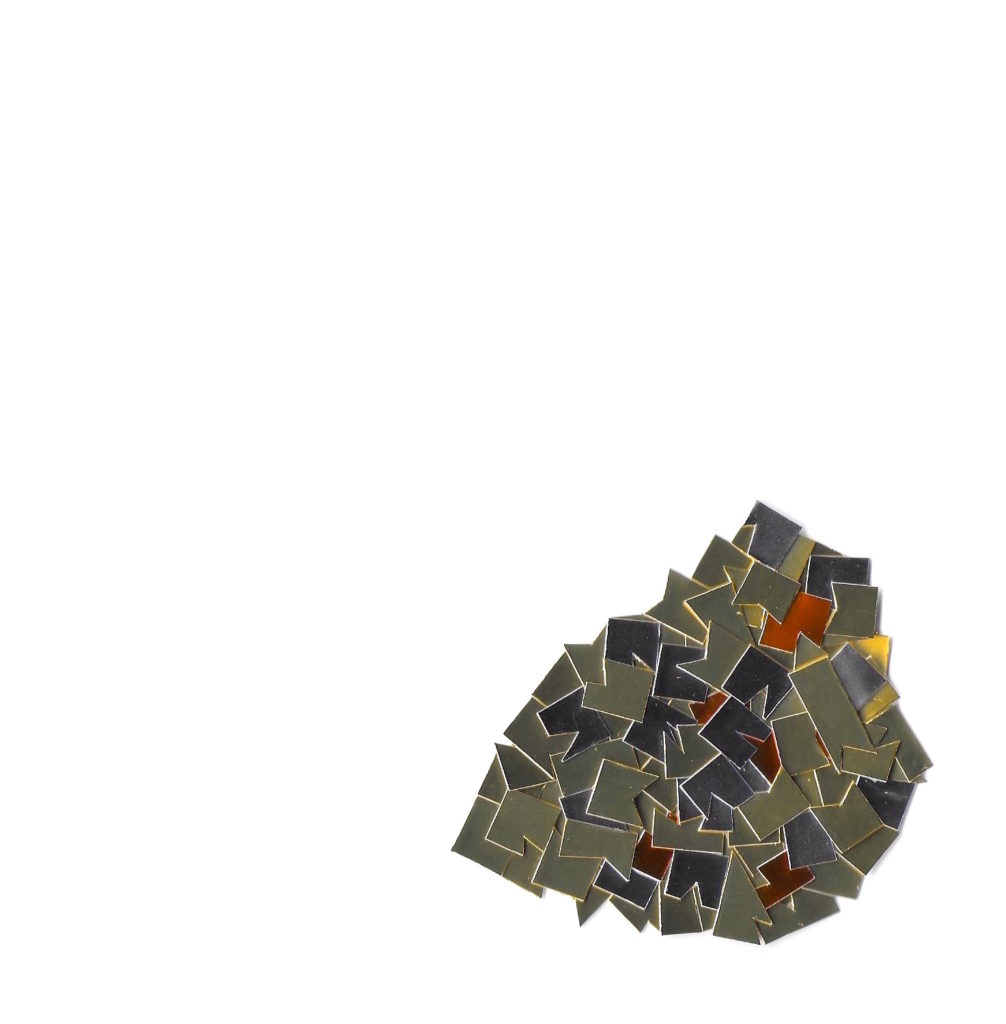
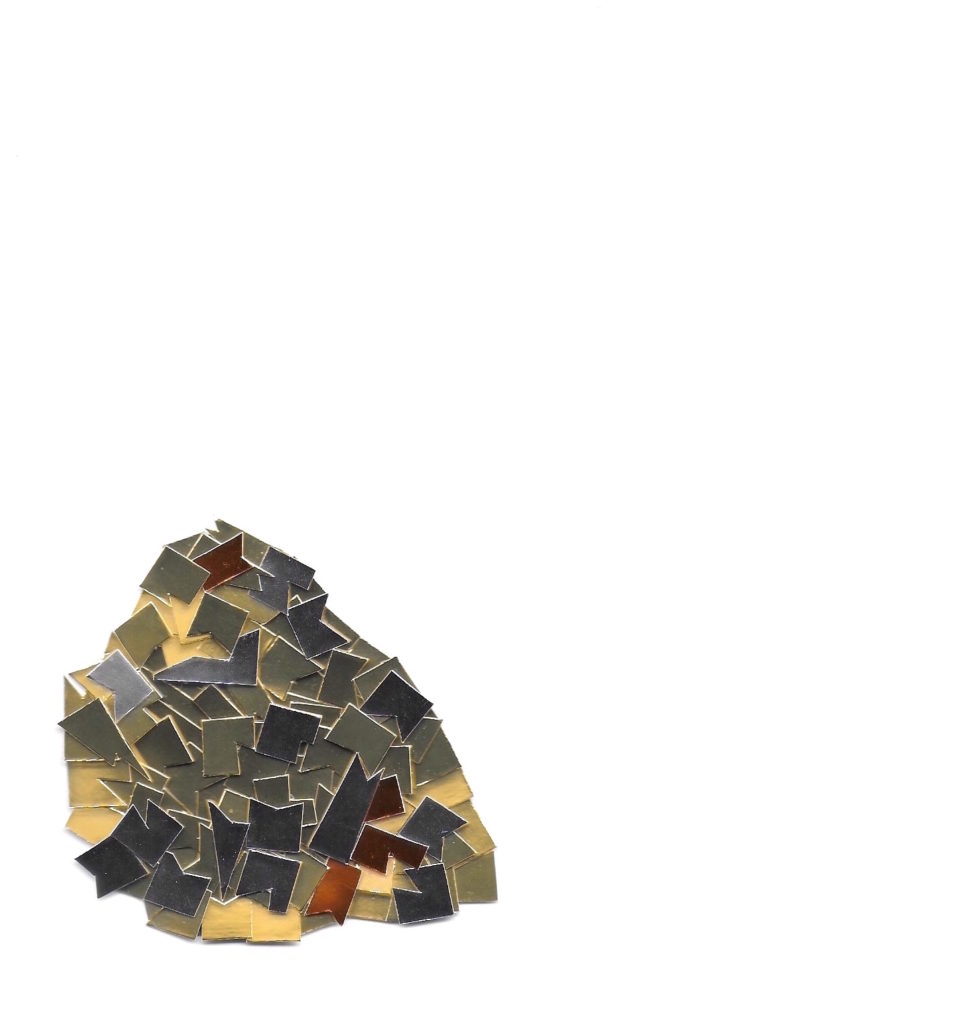
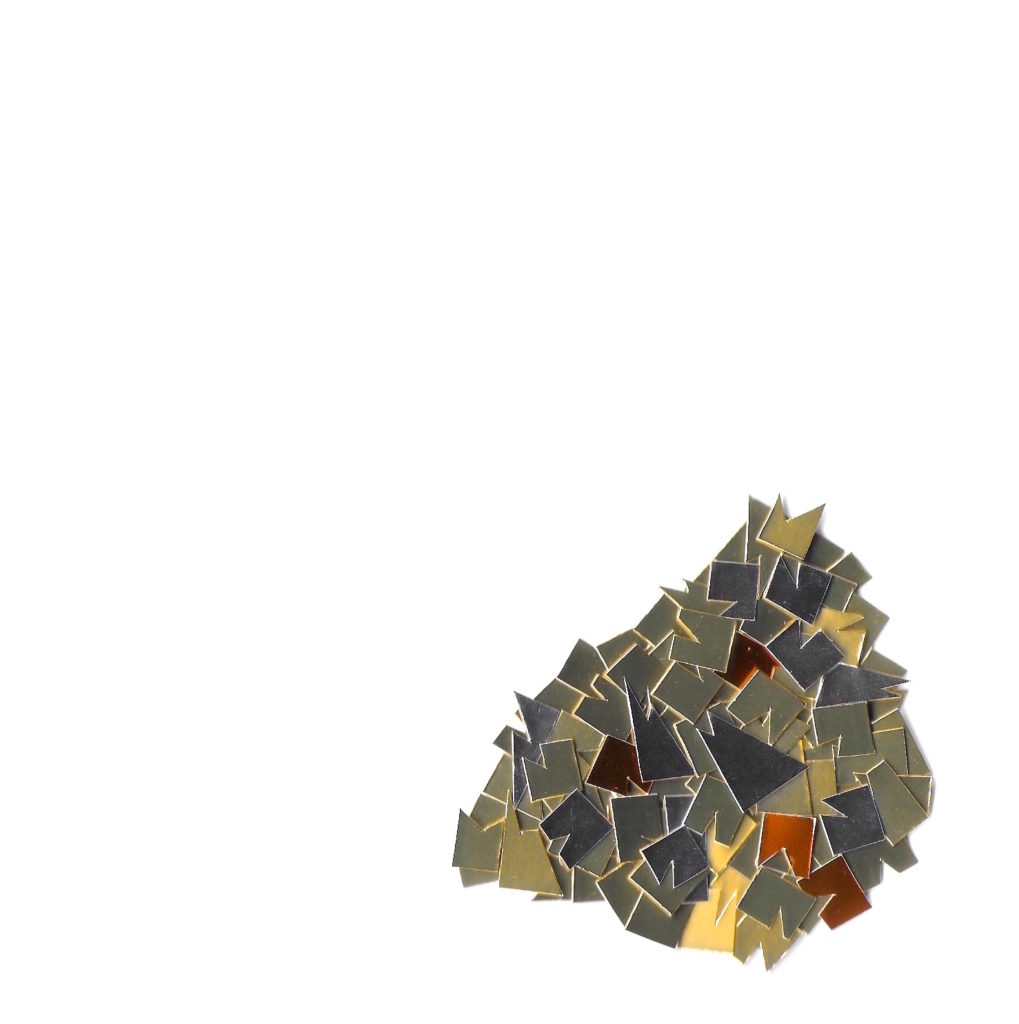
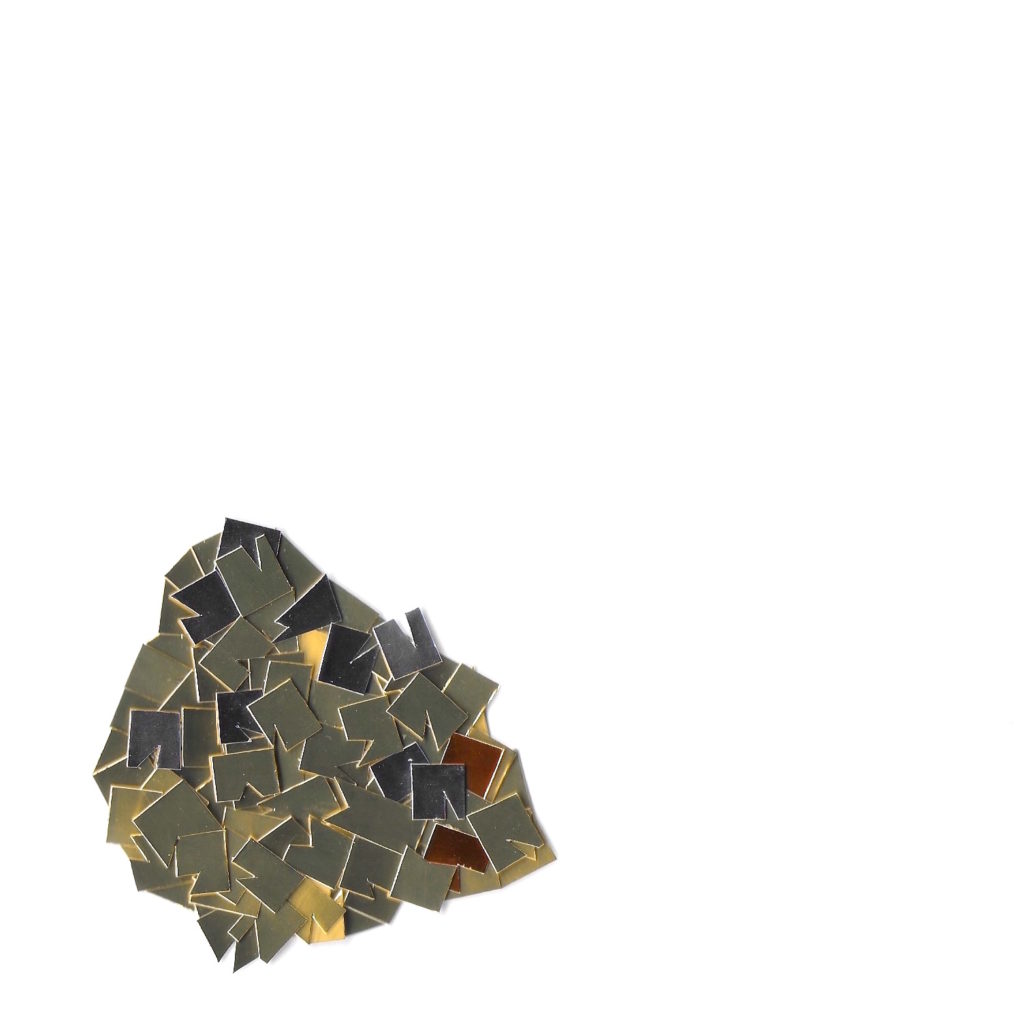
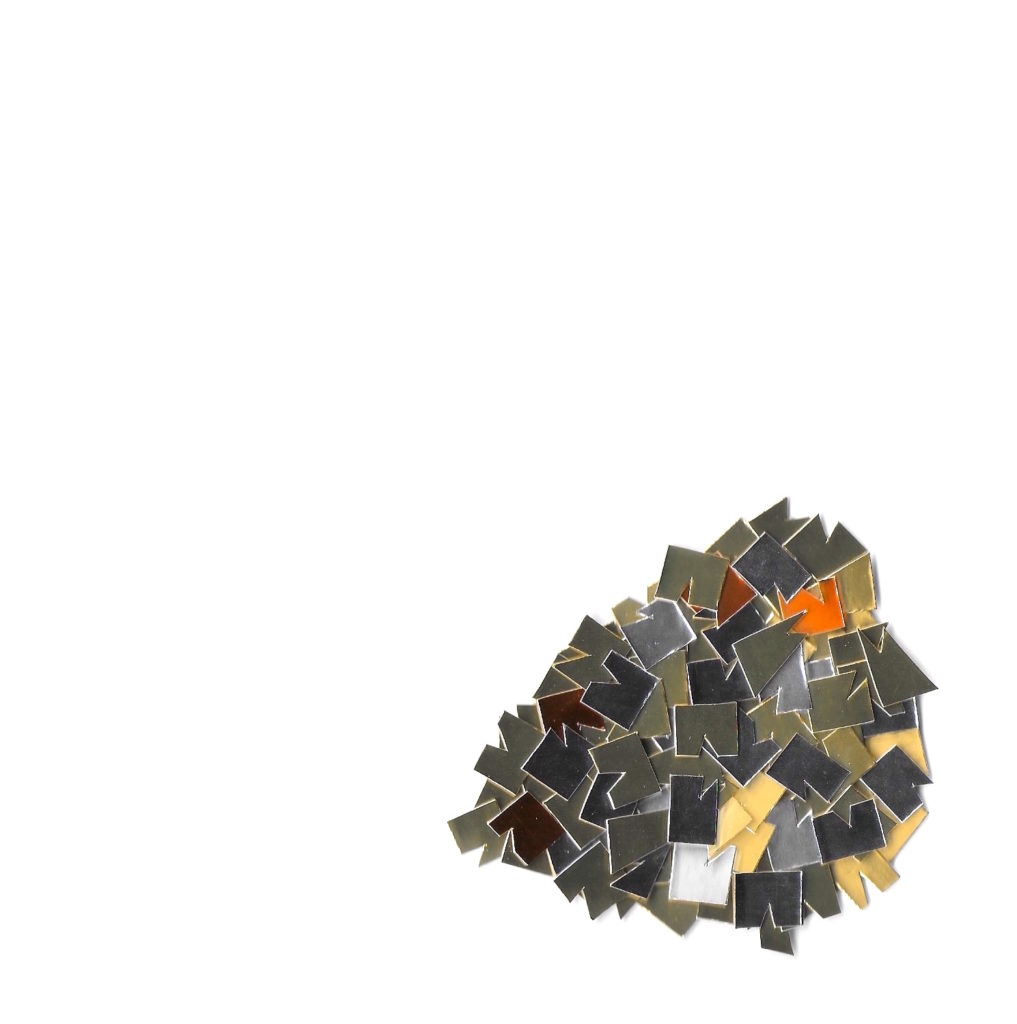
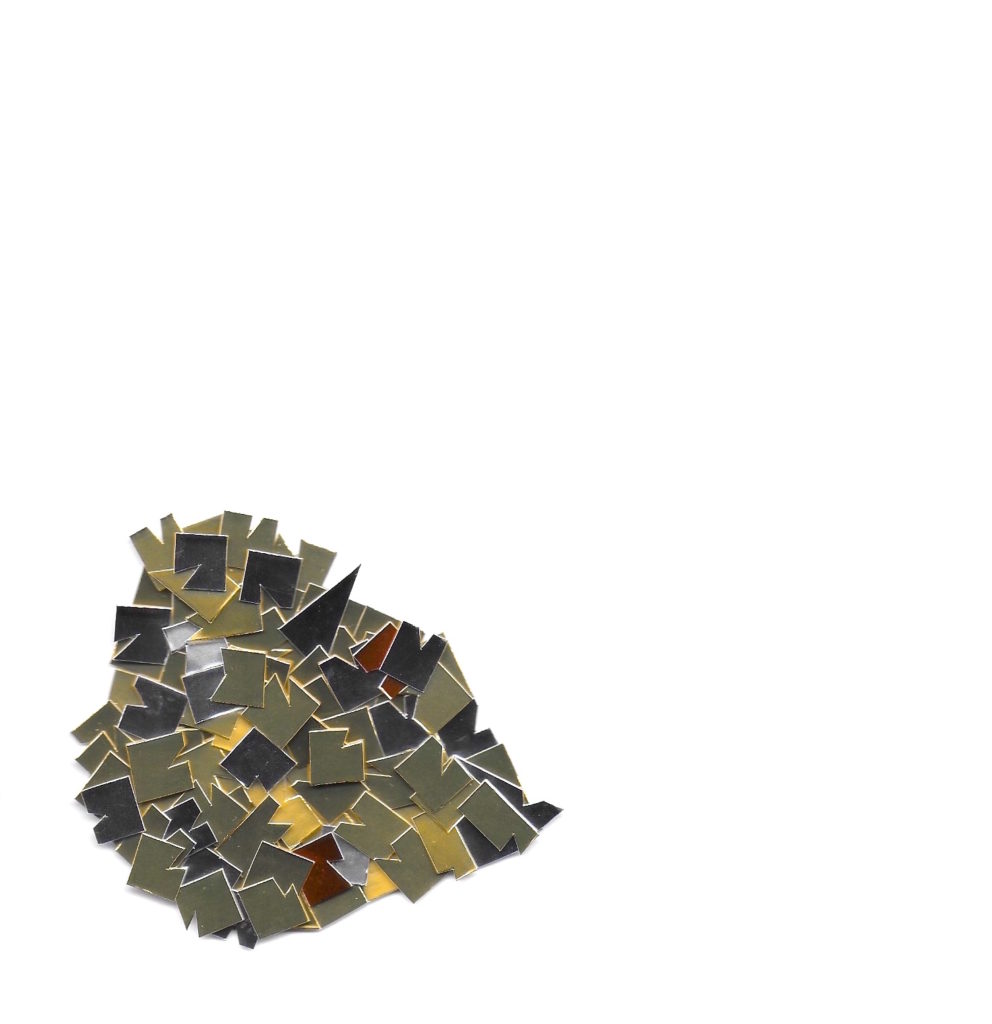
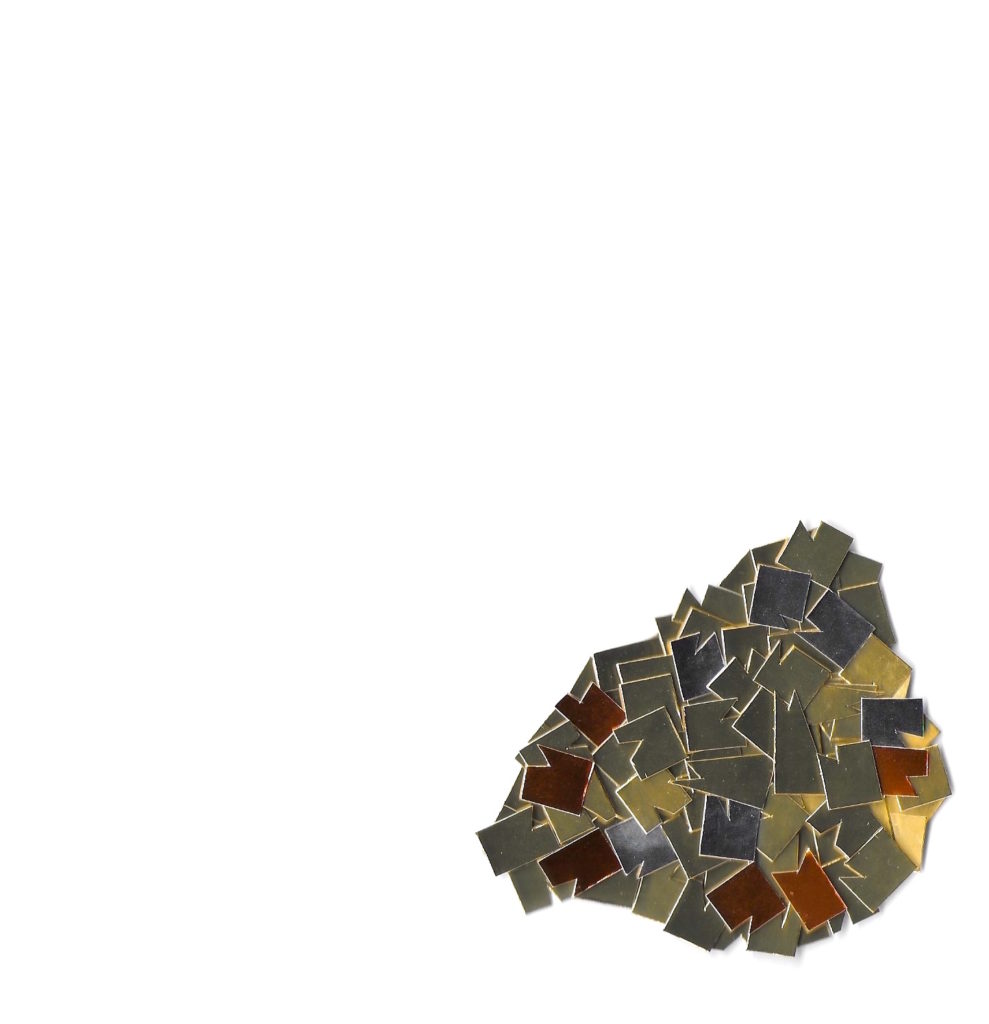
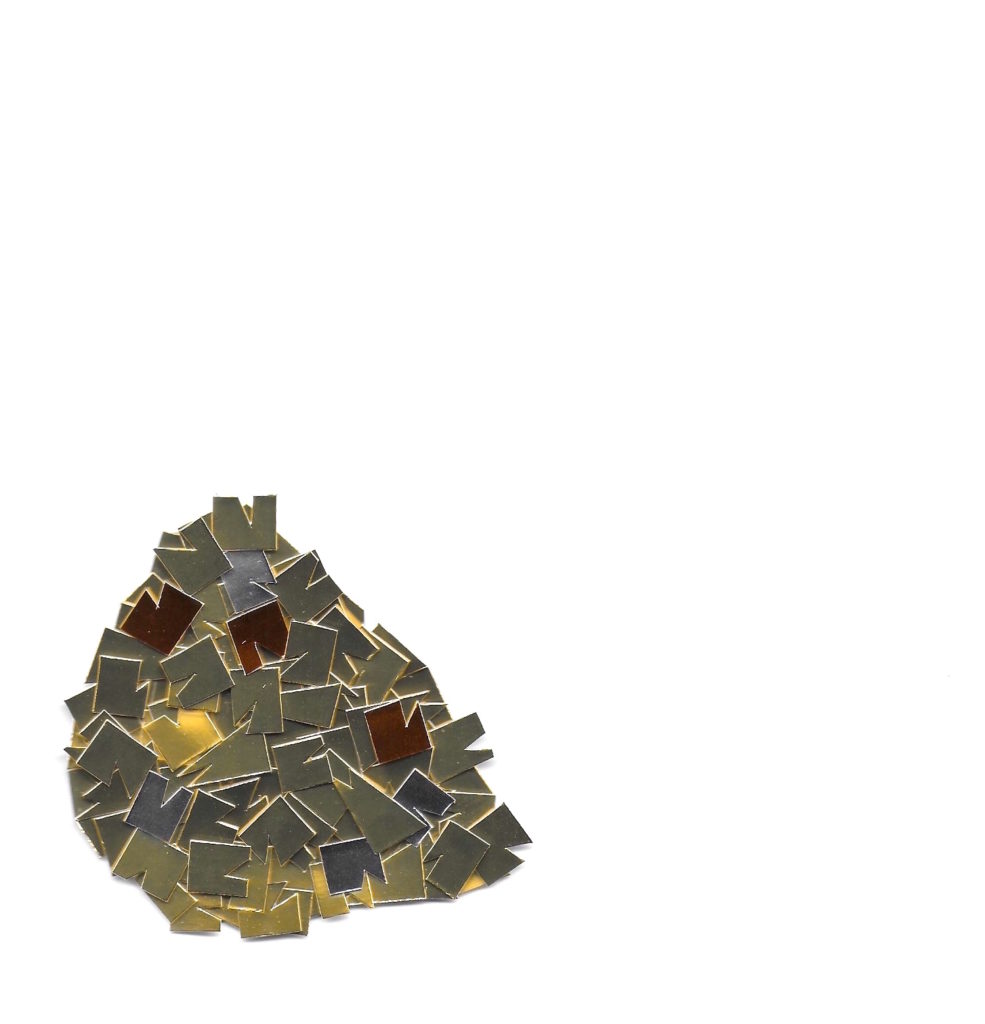
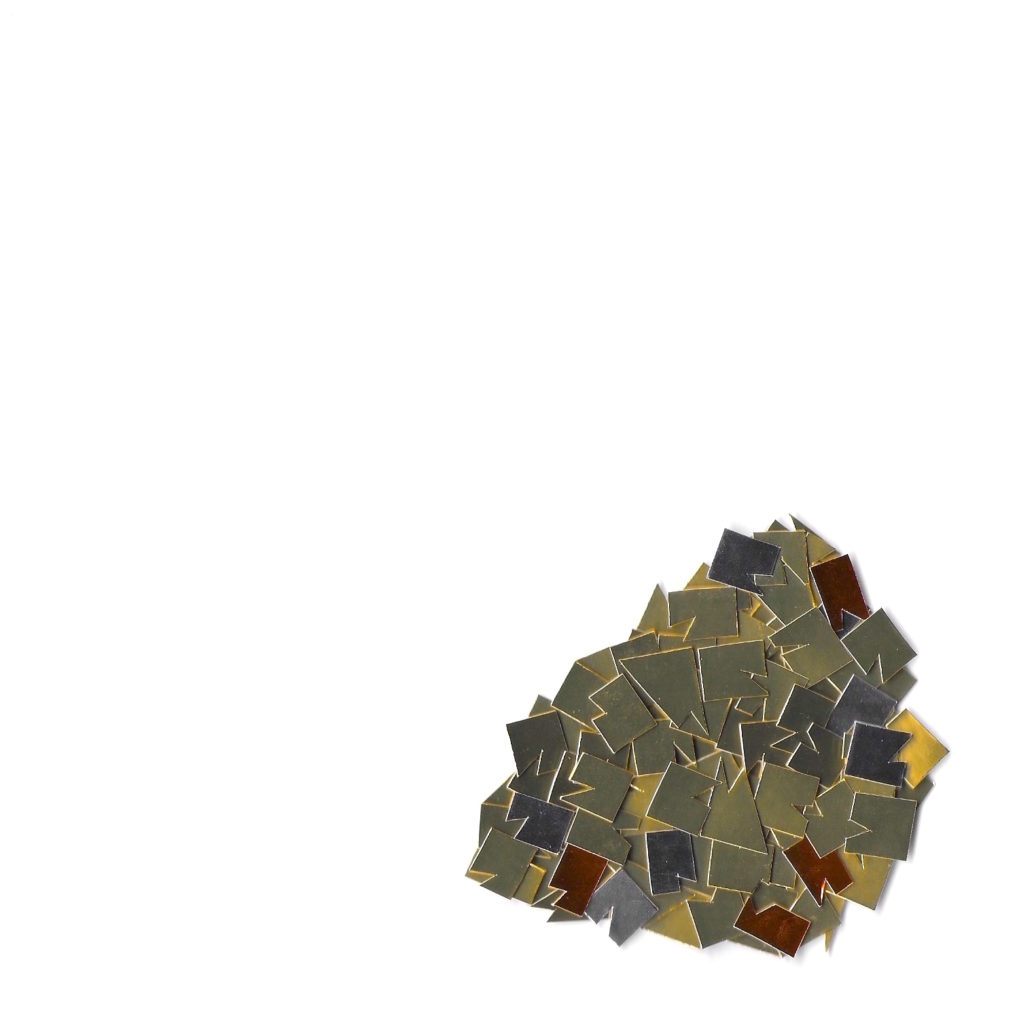
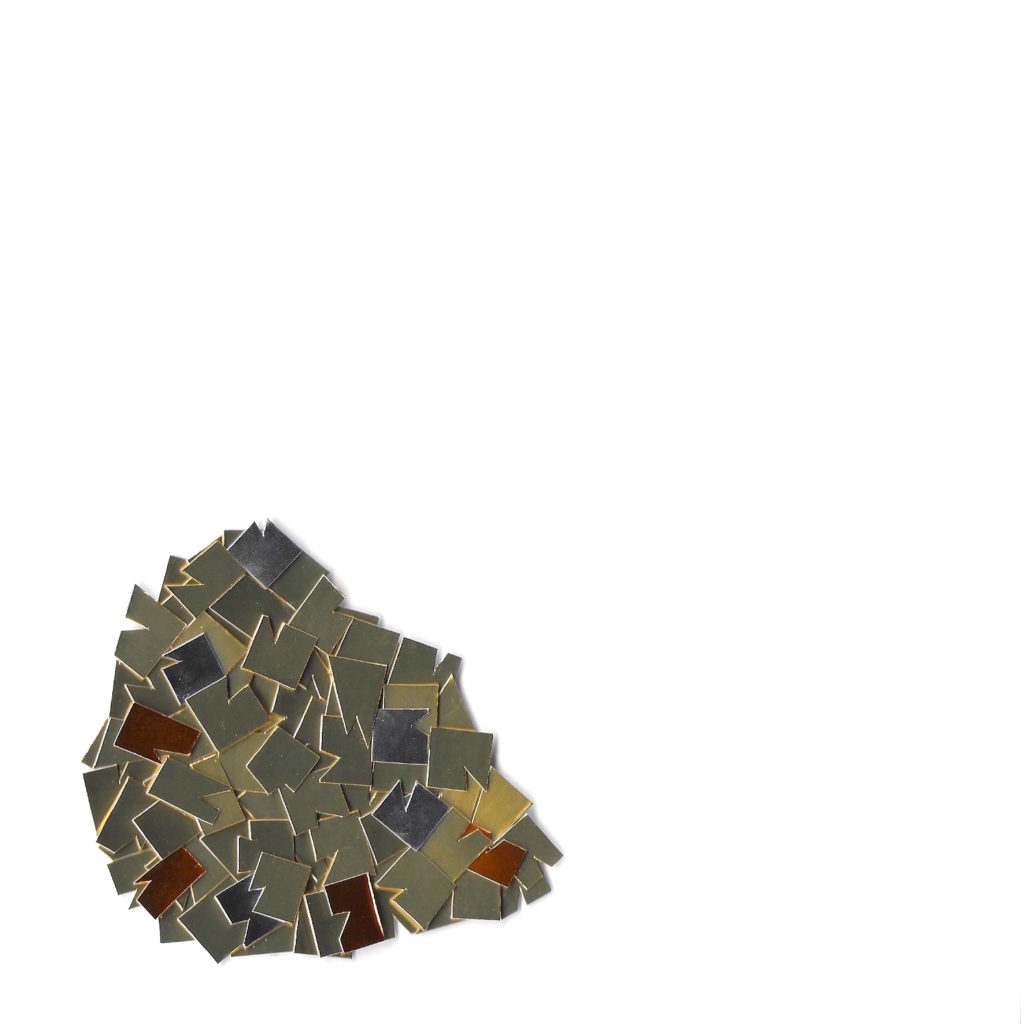
Golder than gold (a response to The West Yorkshire Hoard) April 2019
(From top to bottom, left to right)
No. 1- = 86% gold, 8% silver, 6% copper No. 1+ = 90% gold, 6% silver, 3% copper Primary material: Gold Completeness: Complete
No. 2- = 77% gold, 17% silver, and 6% copper No. 2+ =81% gold, 15% silver, 4% copper Primary material: Gold Completeness: Complete
No. 3- = 85% gold, 11% silver, 4% copper No. 3+ = 89% gold, 9% silver, 2% copper Primary material: Gold Completeness: Complete
No. 4- = 75% gold, 22% silver, 4% copper No. 4+ =79% gold, 19% silver, 2% copper Primary material: Gold Completeness: Complete
No. 5- = 88% gold, 6% silver, 6% copper No. 5+ = 92% gold, 4% silver, 3% copper Primary material: Gold Completeness: Complete
No. 6- = 89% gold, 7% silver, 4% copper No. 6+= 91% gold, 5% silver, 4% copper Primary material: Gold Completeness: Complete
All material percentage and breakdown information taken from the Portables Antiques Scheme’s scientific analysis of The West Yorkshire Hoard – https://finds.org.uk/database/artefacts/record/id/391699 & https://finds.org.uk/database/artefacts/record/id/459594
Golder than
Material: Collage – Card-gold, silver, copper, photography paper, glue
Size: 19cm(w) x 19.5cm(l) x 12 – framed in pairs – 6
Exhibited: Deconstructing the West Yorkshire Hoard | Studio G.09, School of Fine Art, Art History, Cultural Studies, Leeds University – July 2019
Solo exhibition – To earmark | Project Space, School of Fine Art, Art History, Cultural Studies, Leeds University – July 2019
